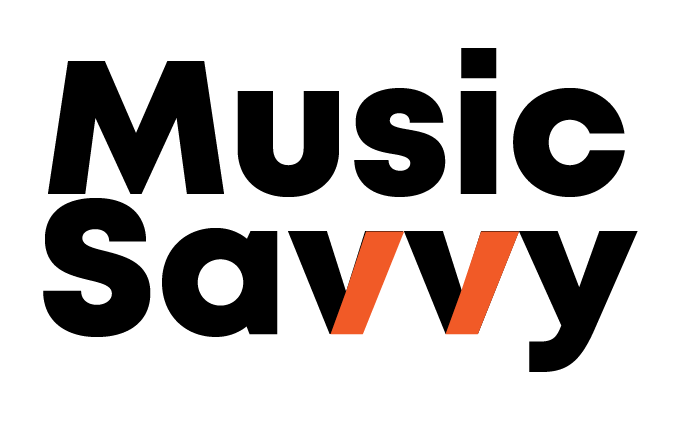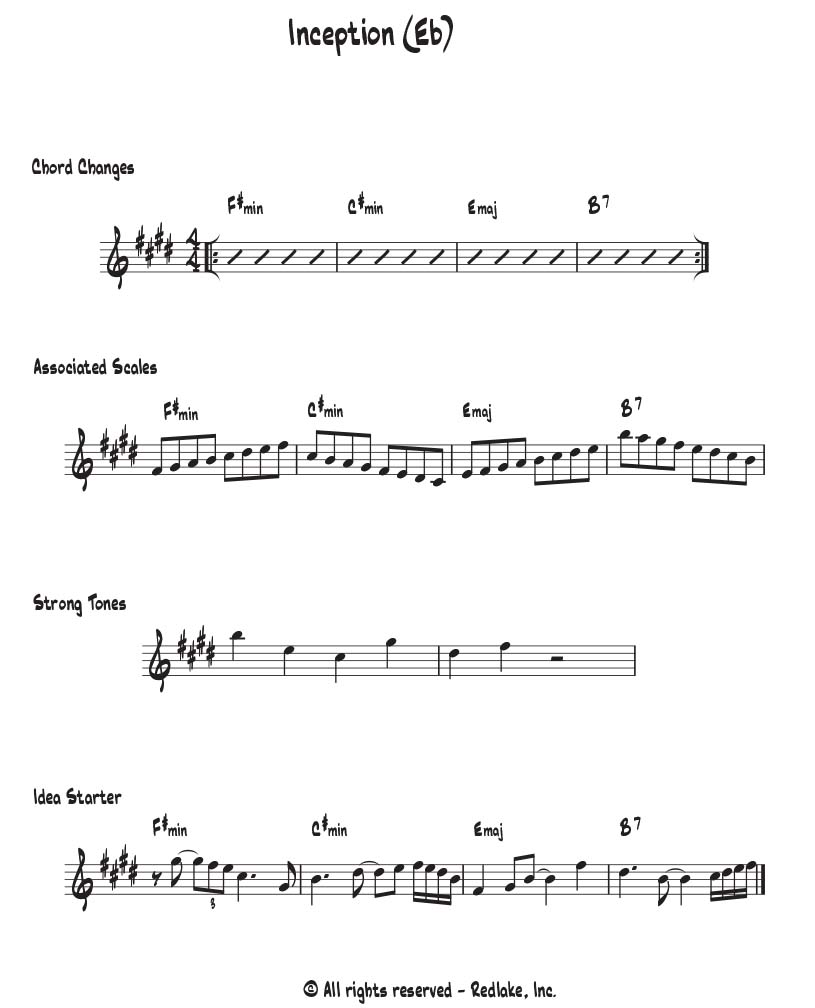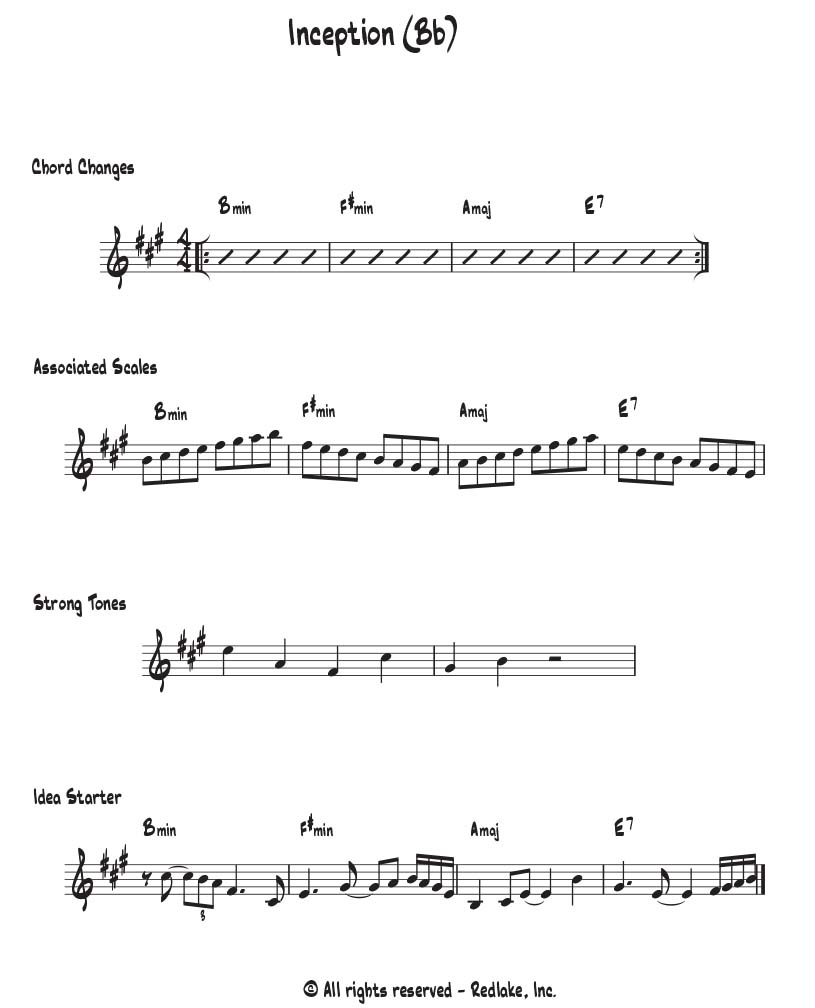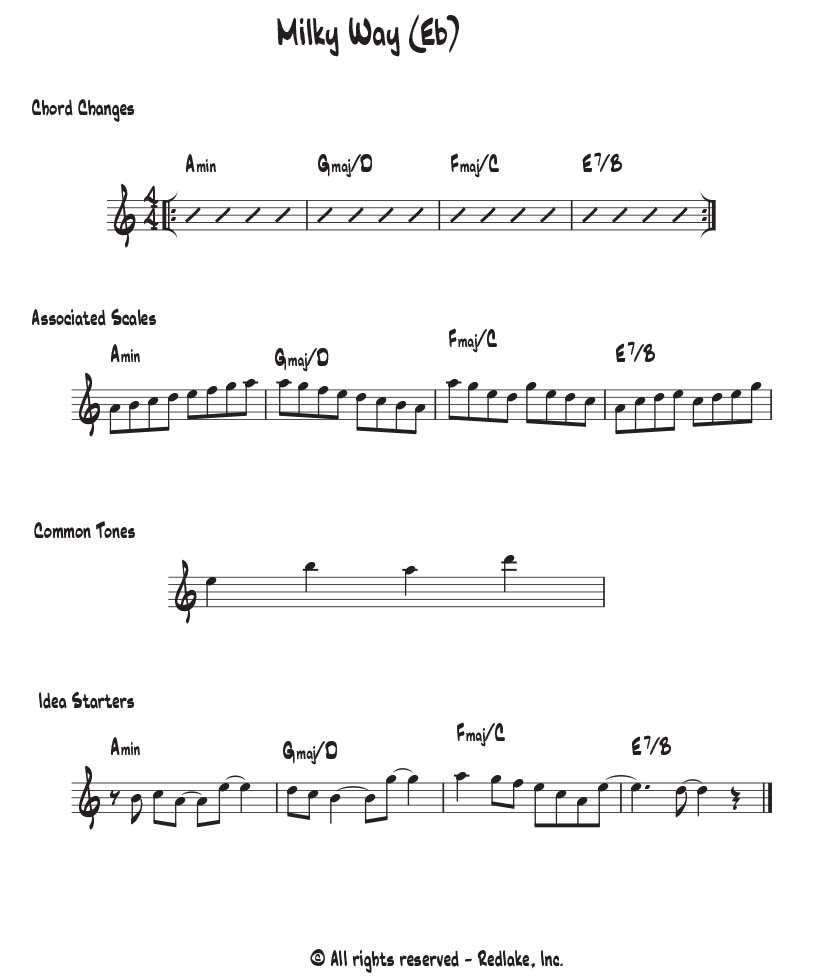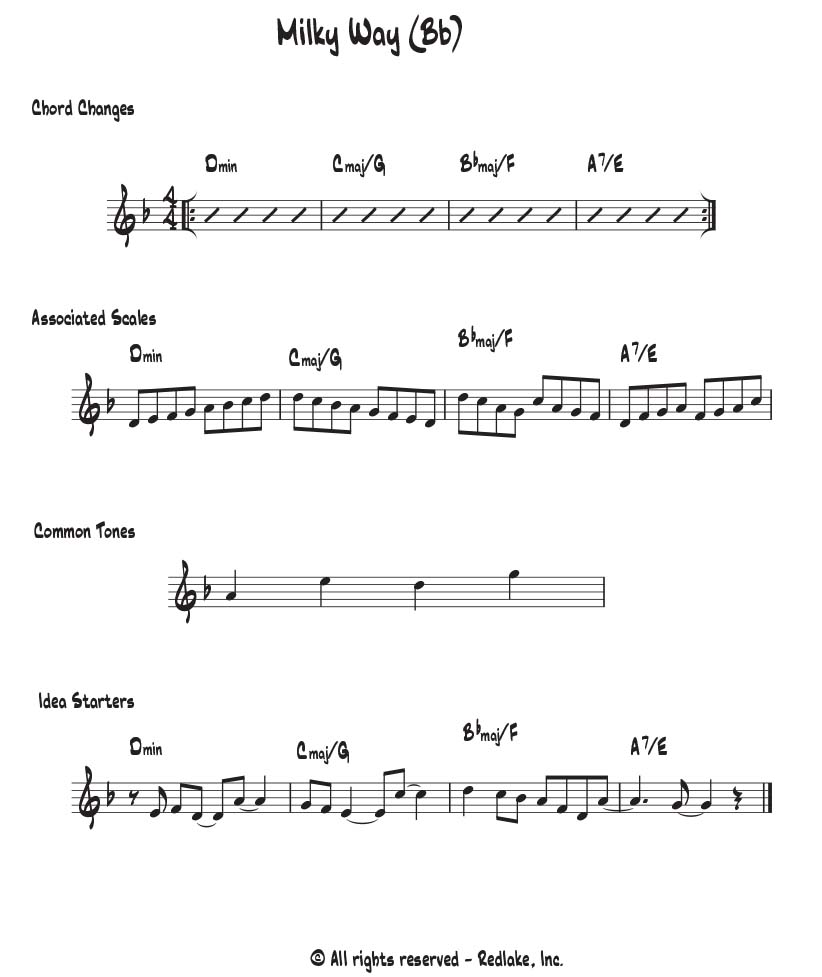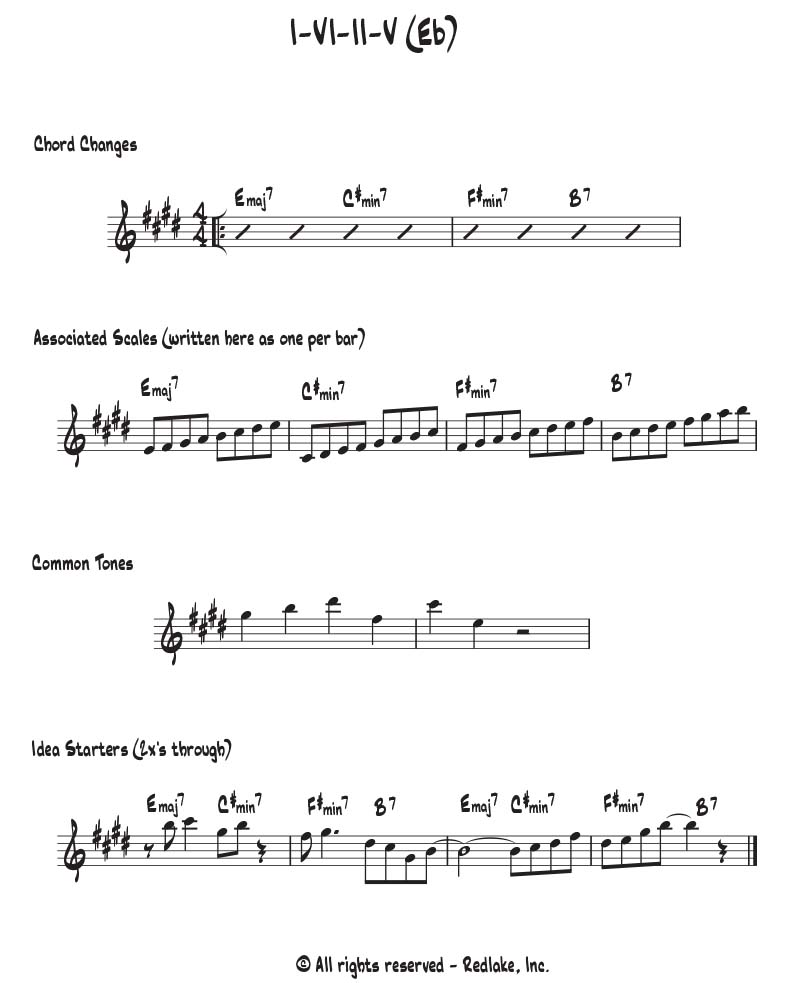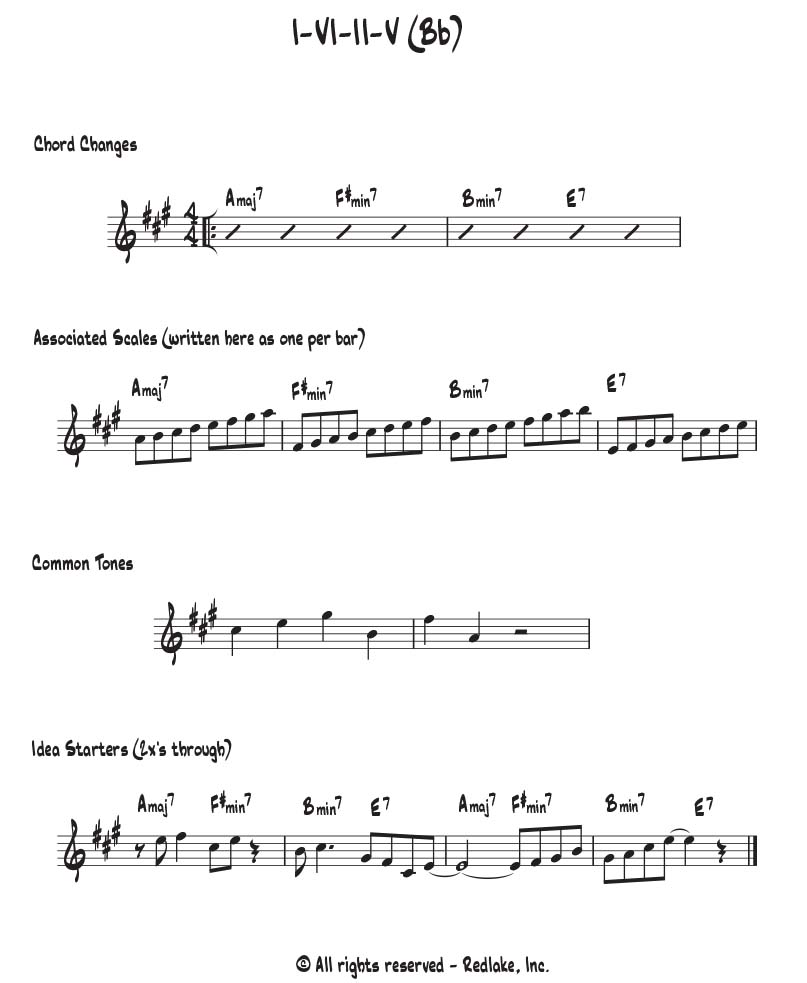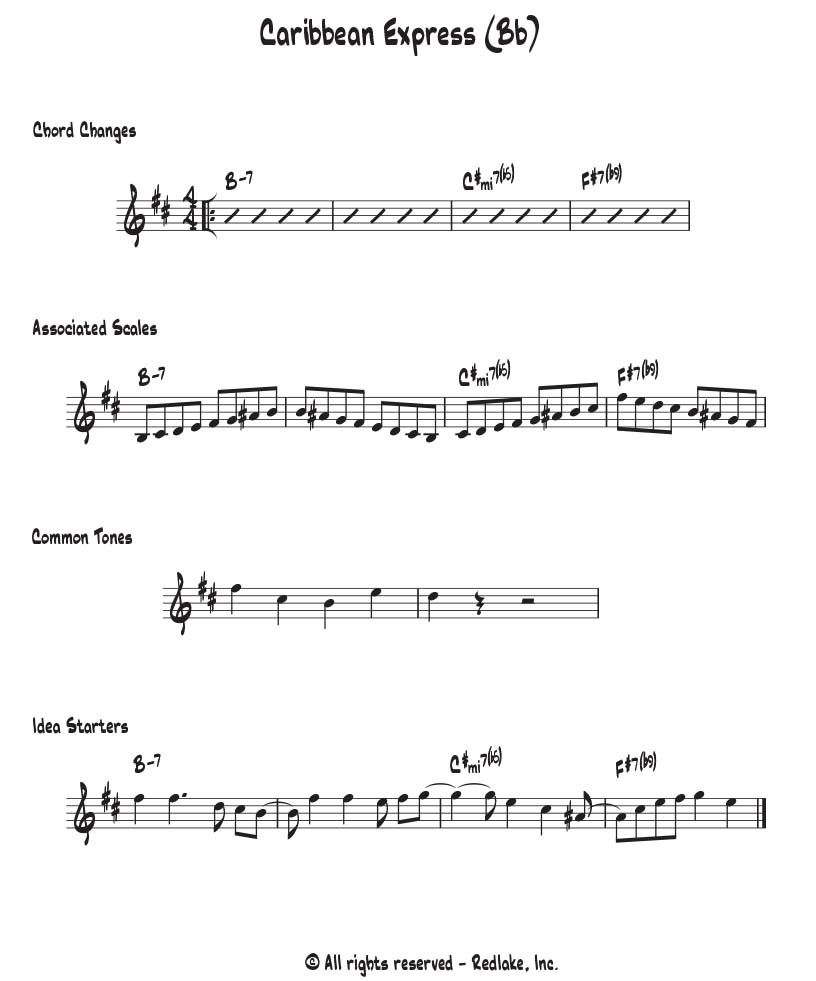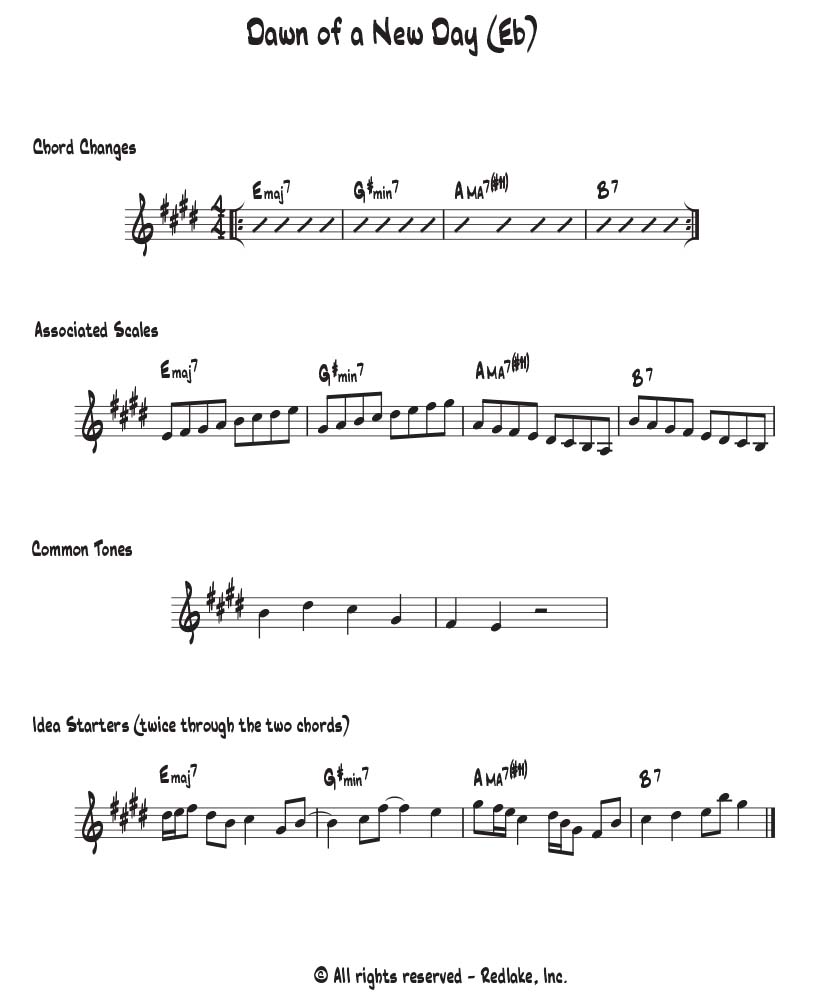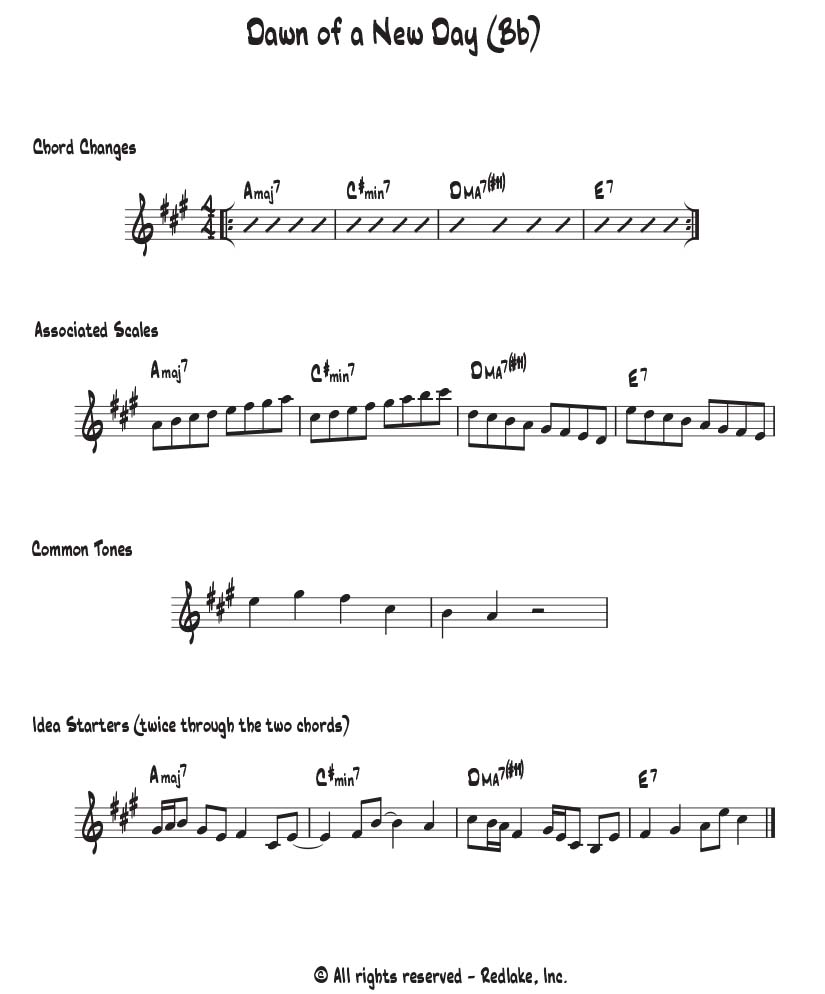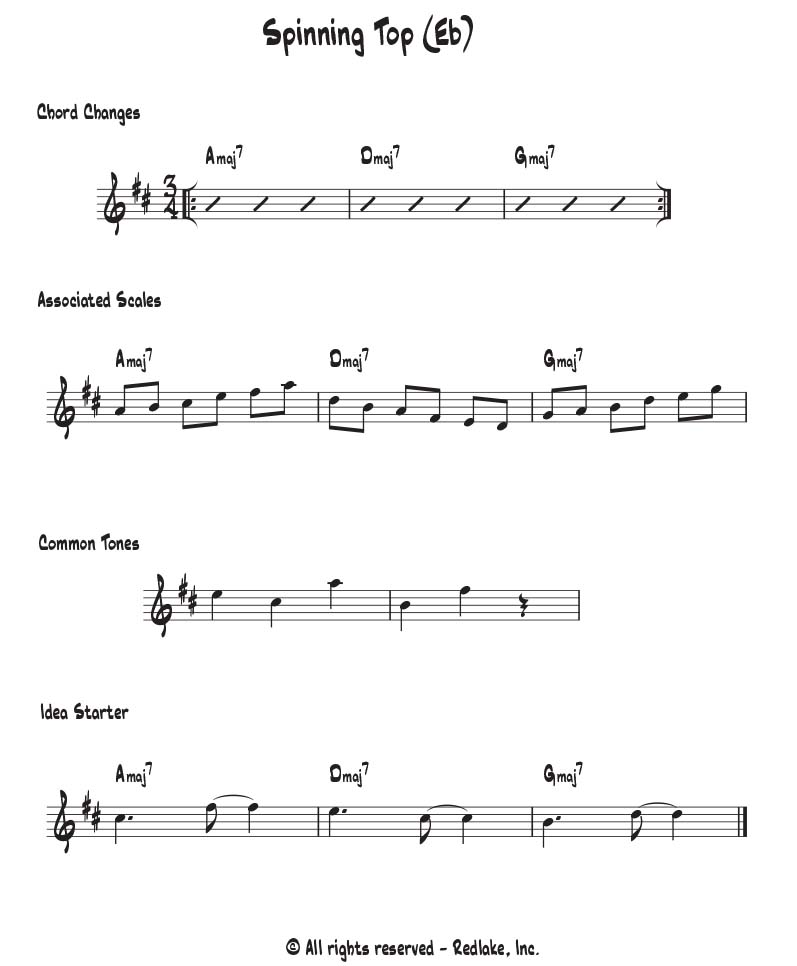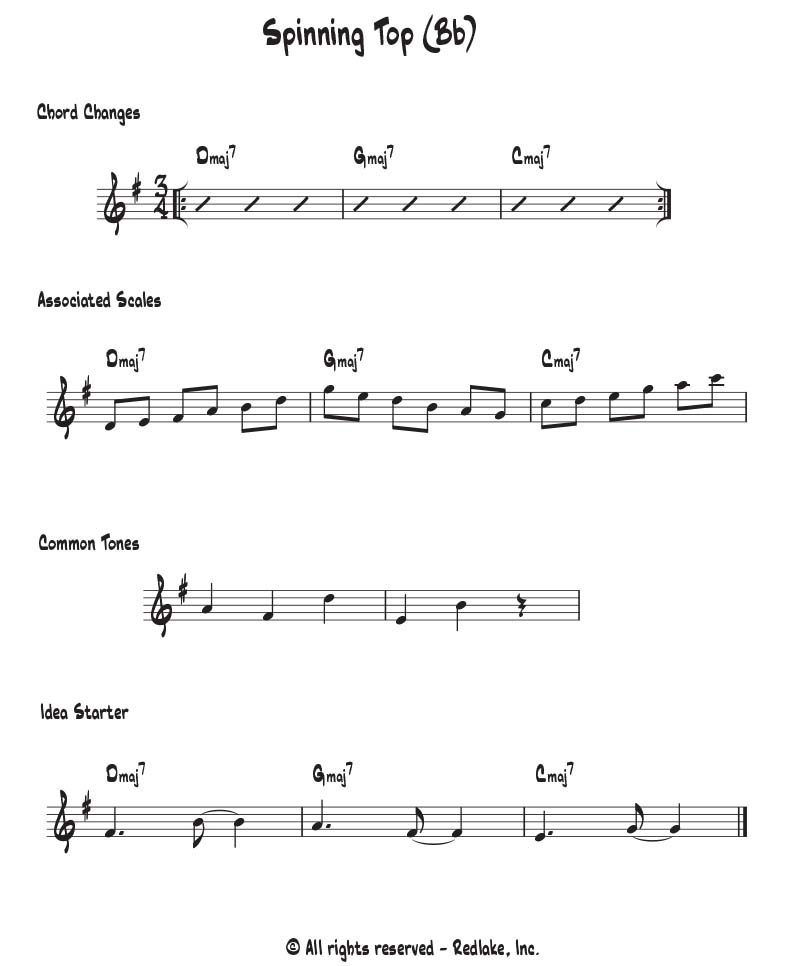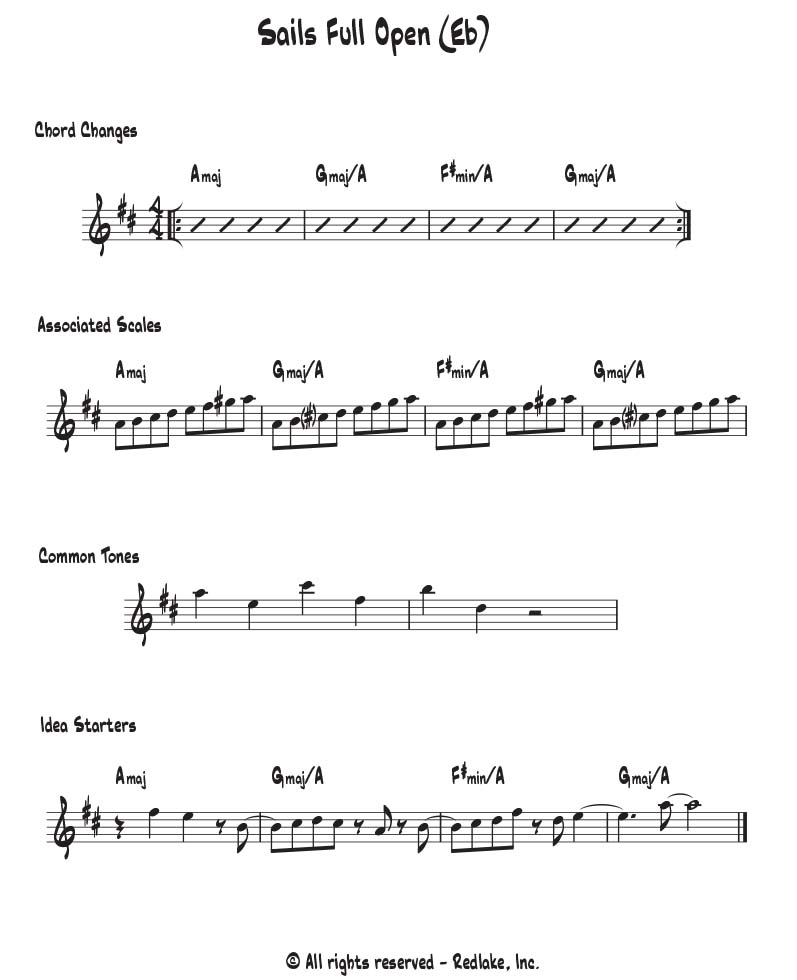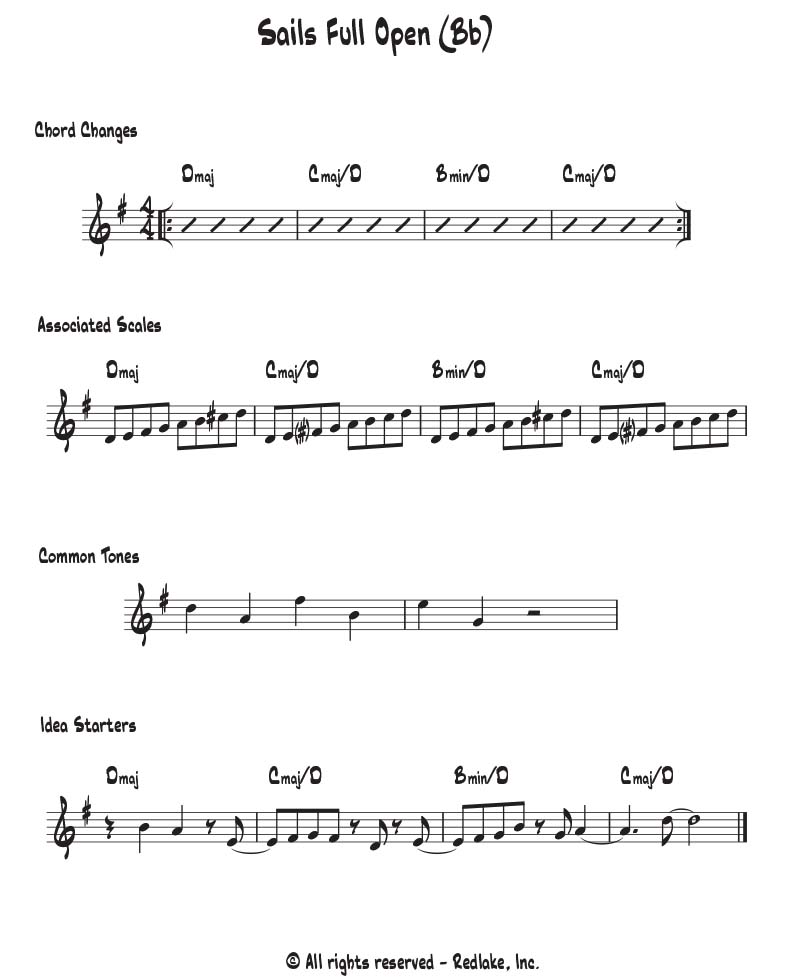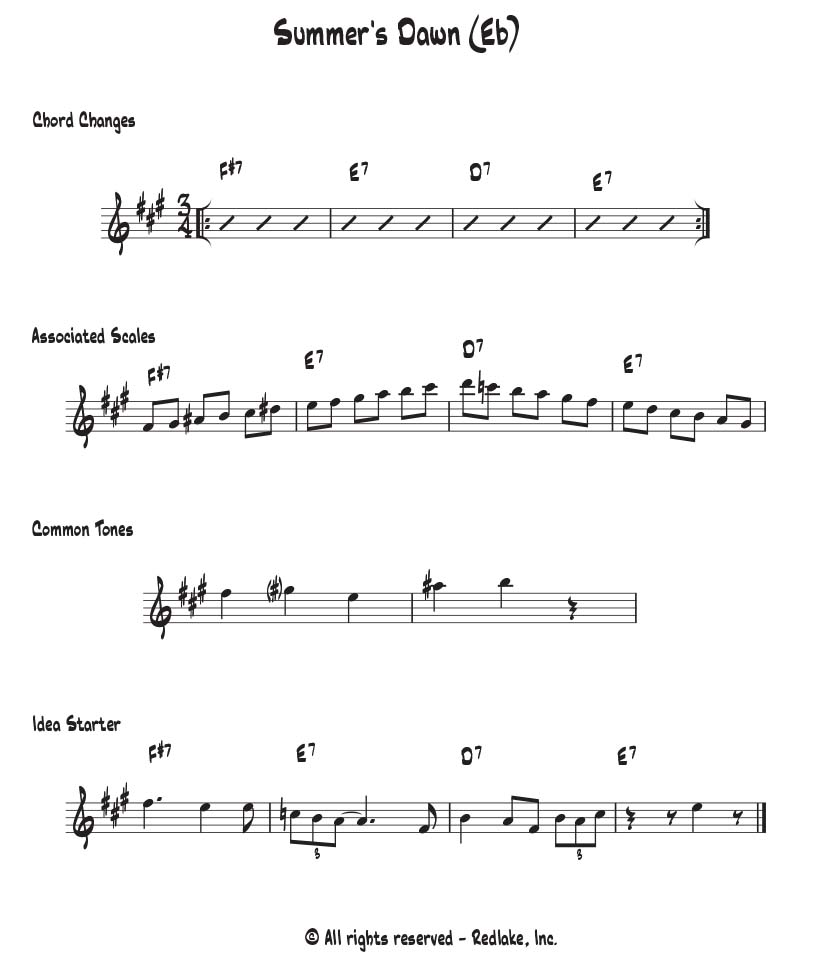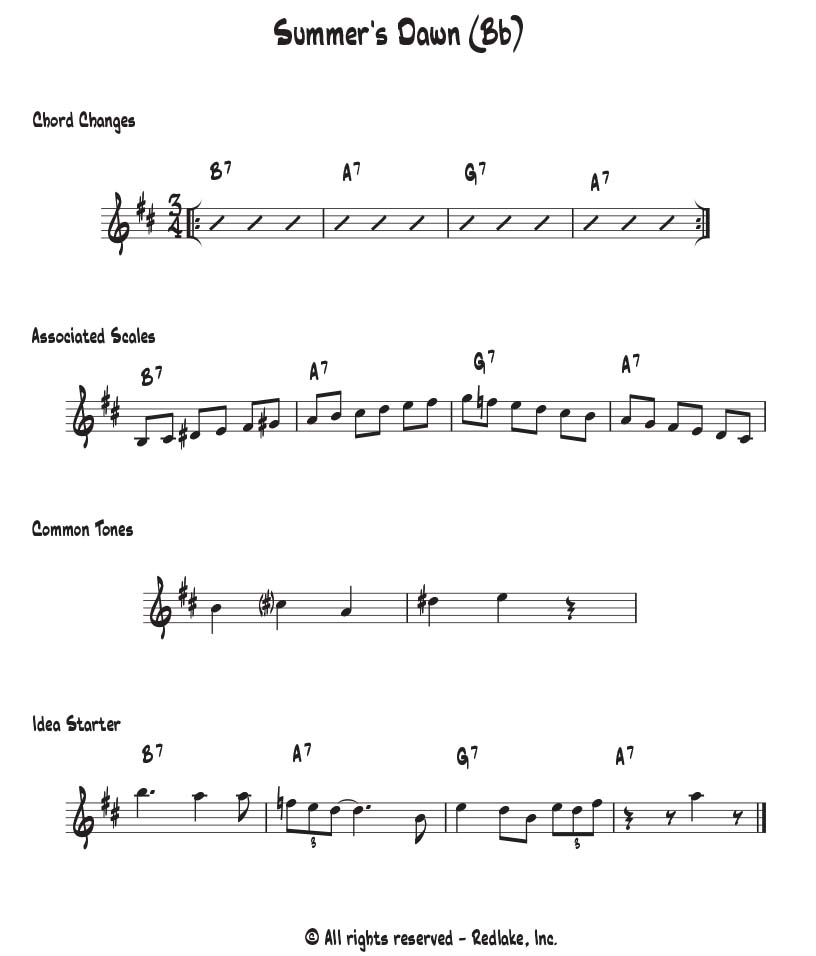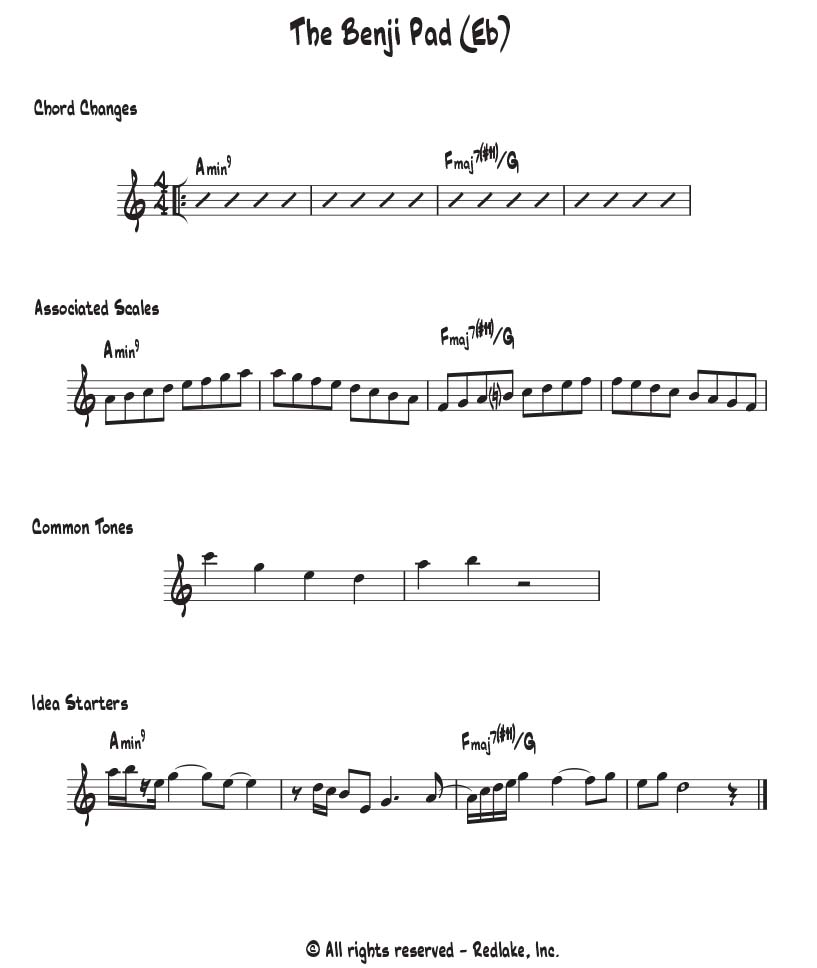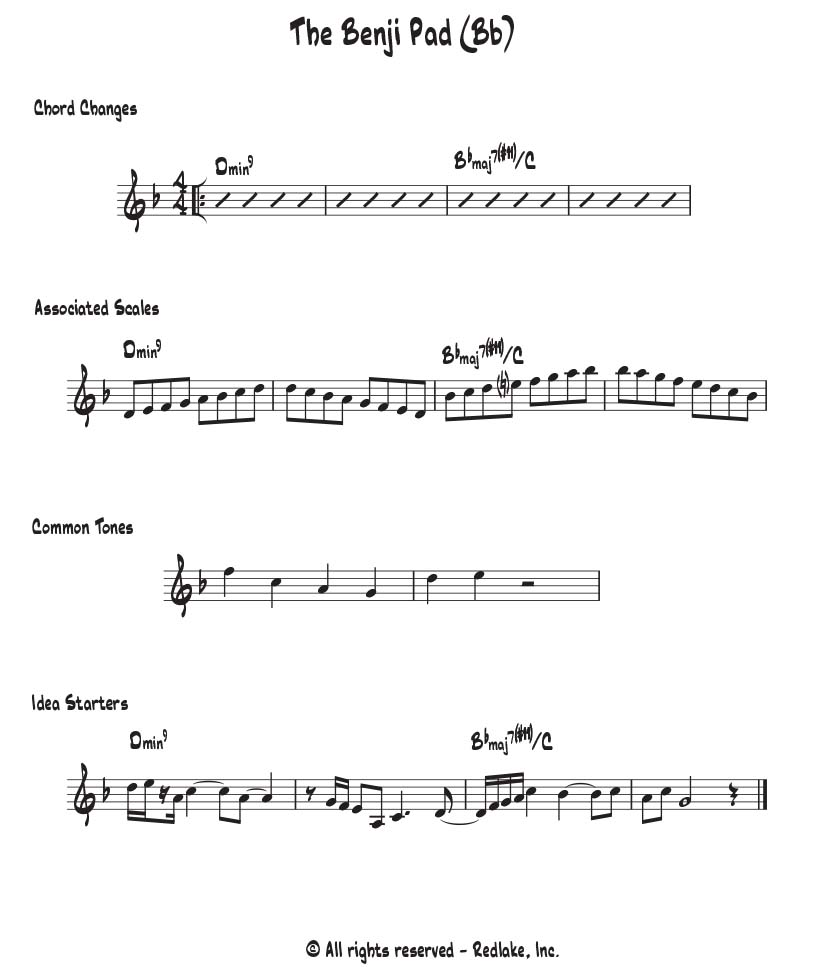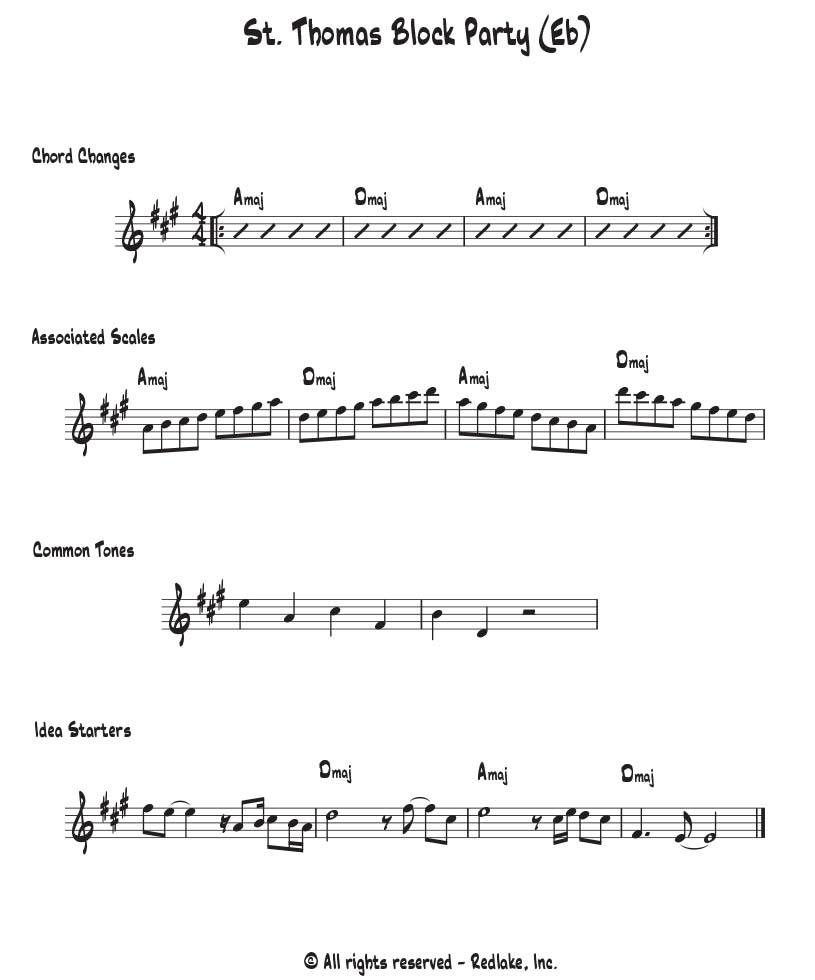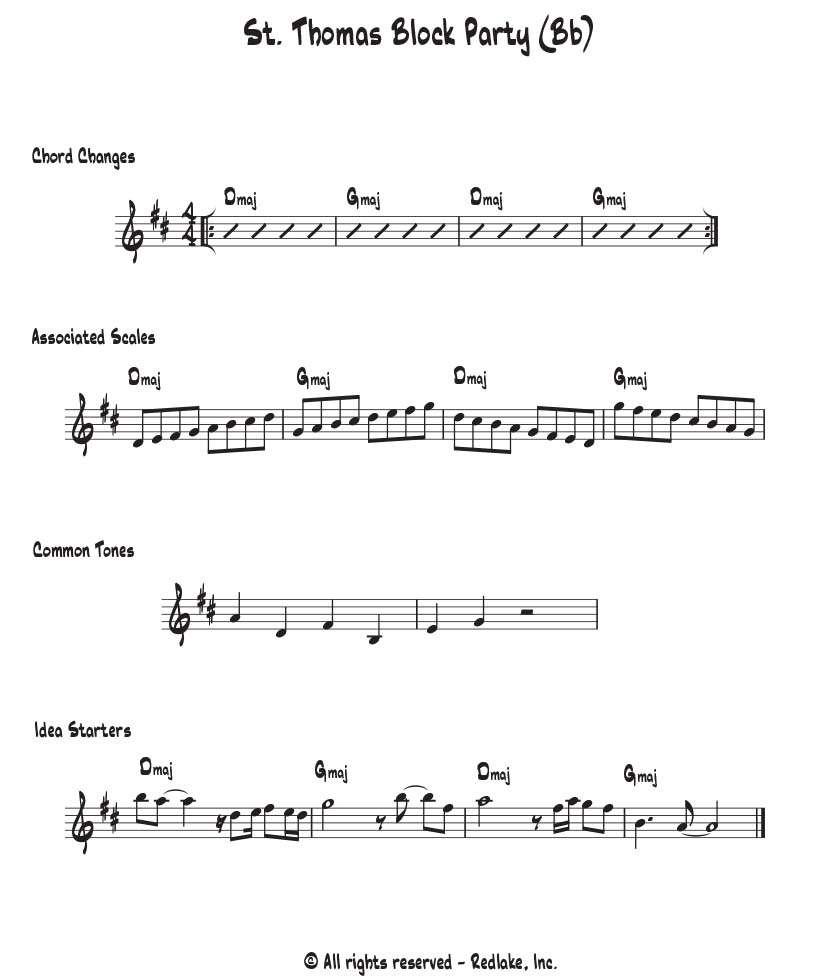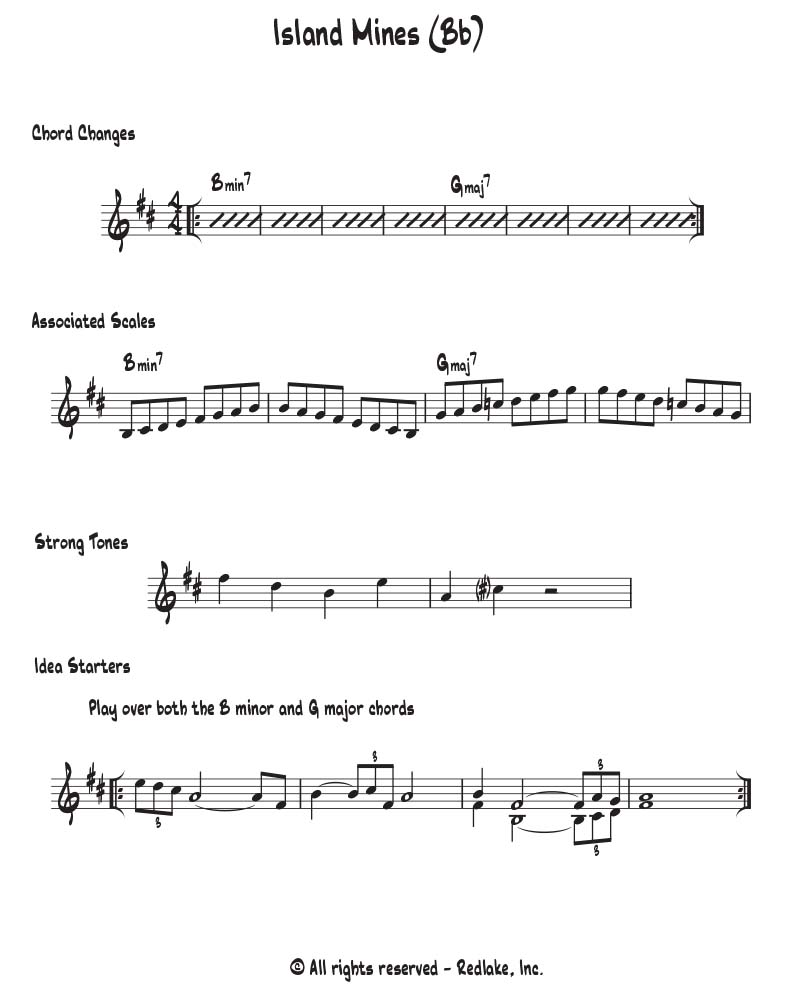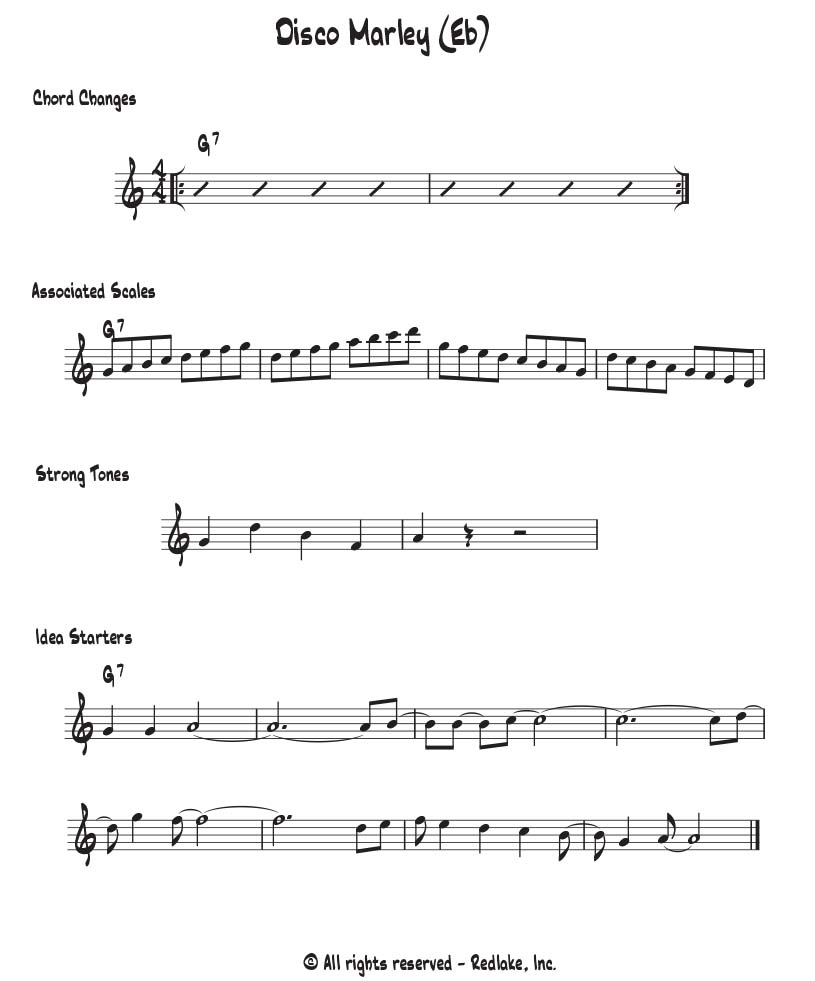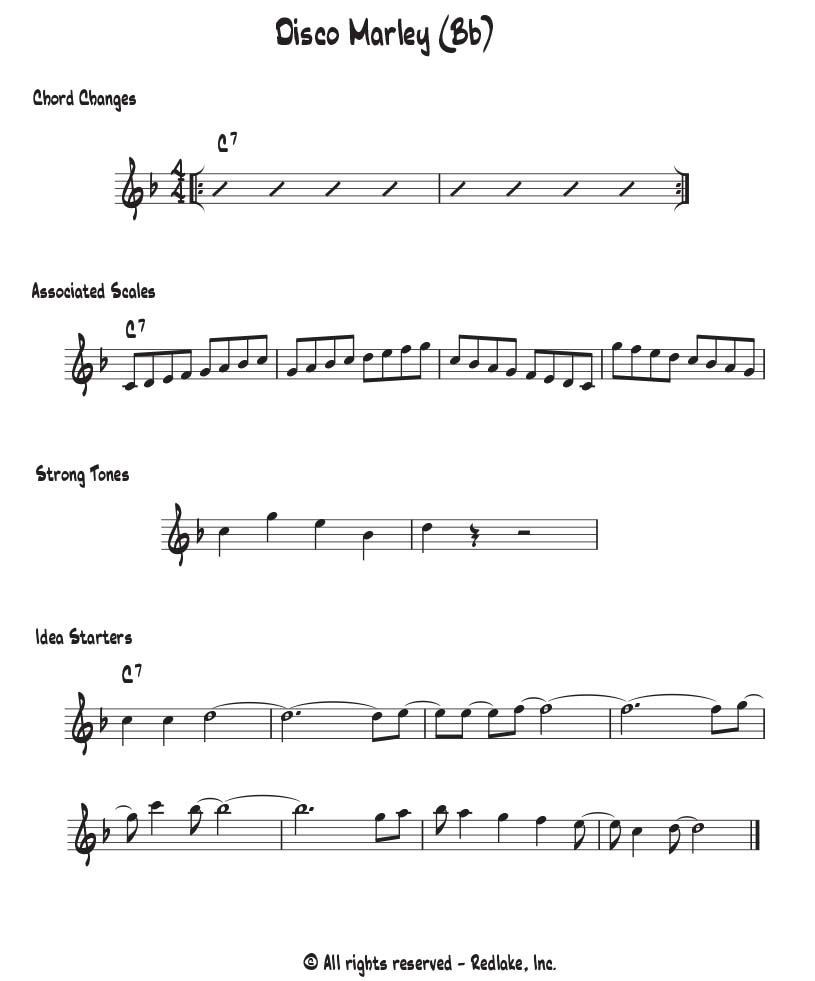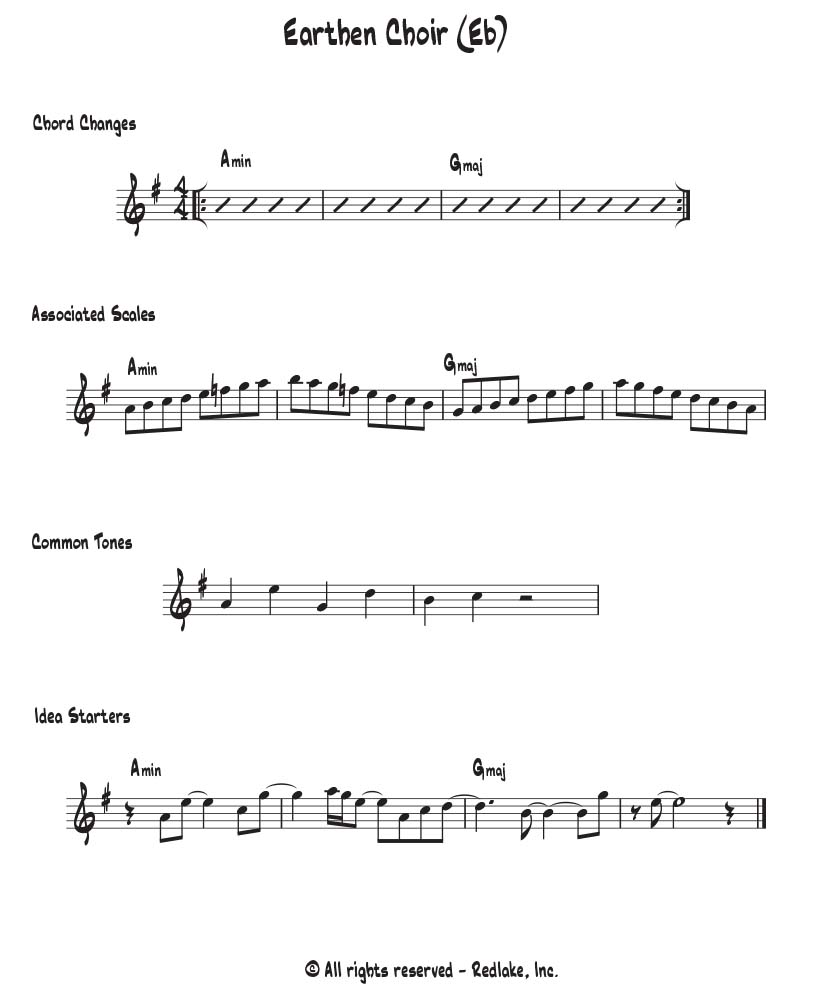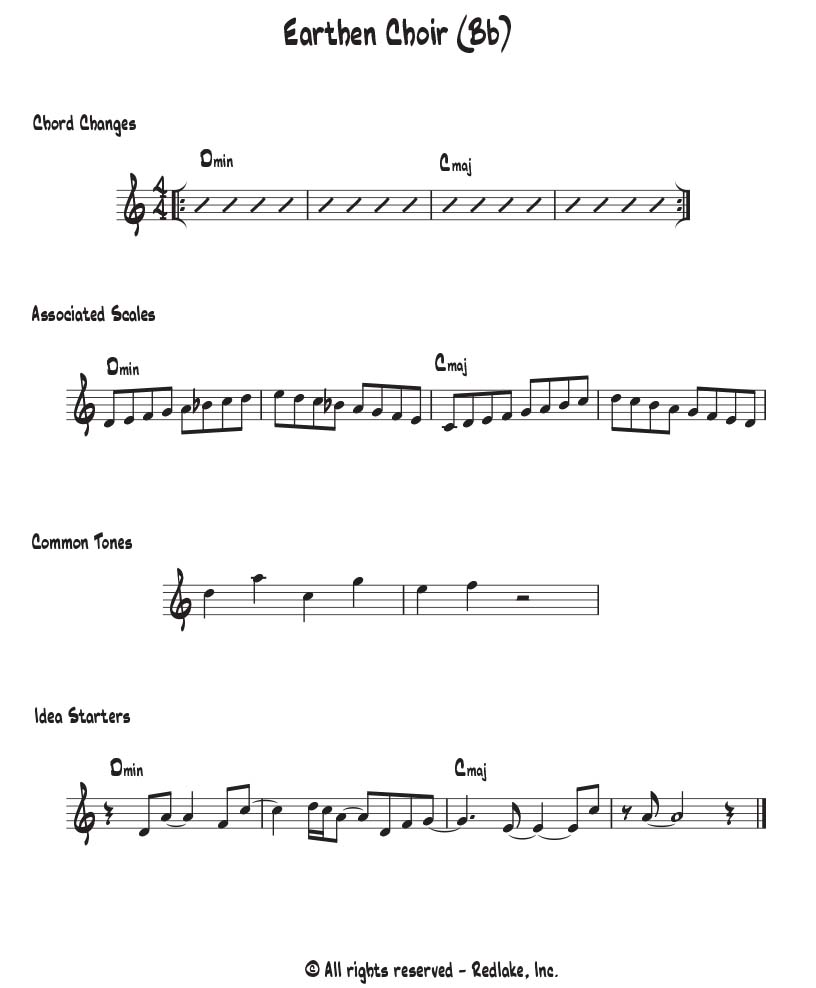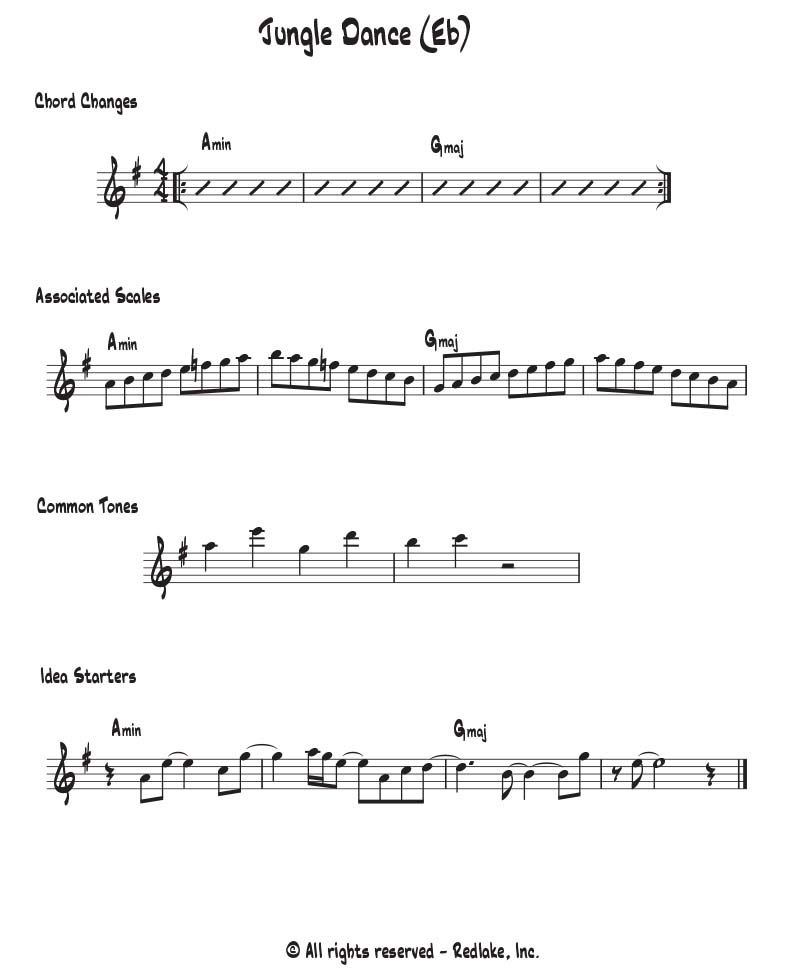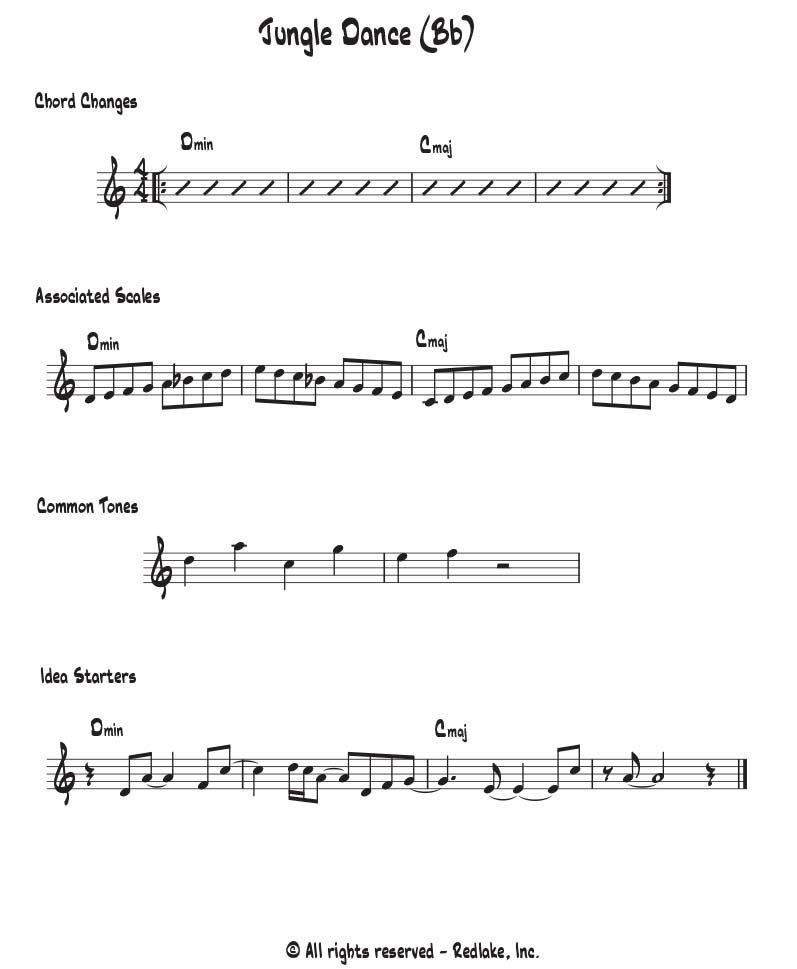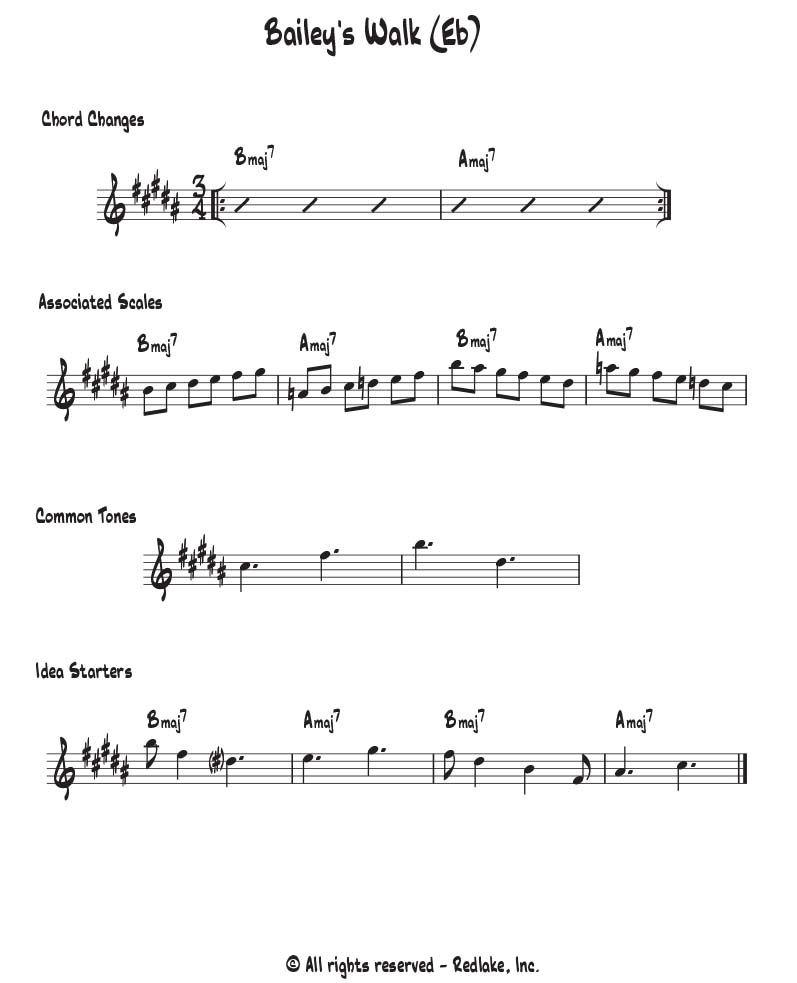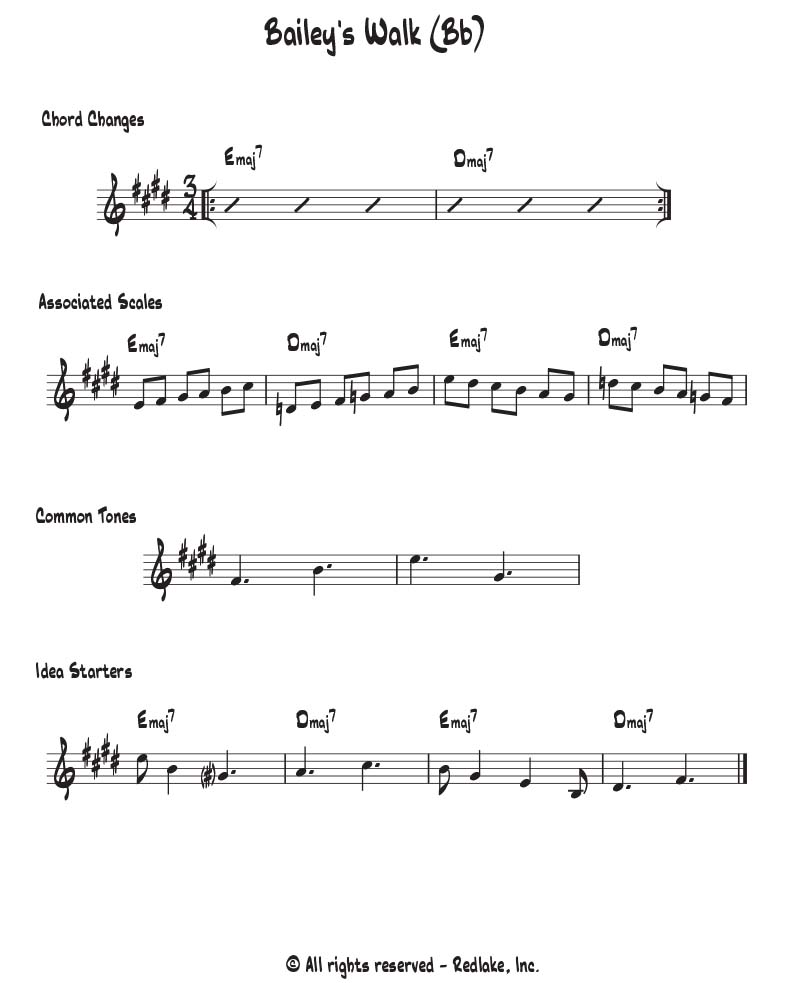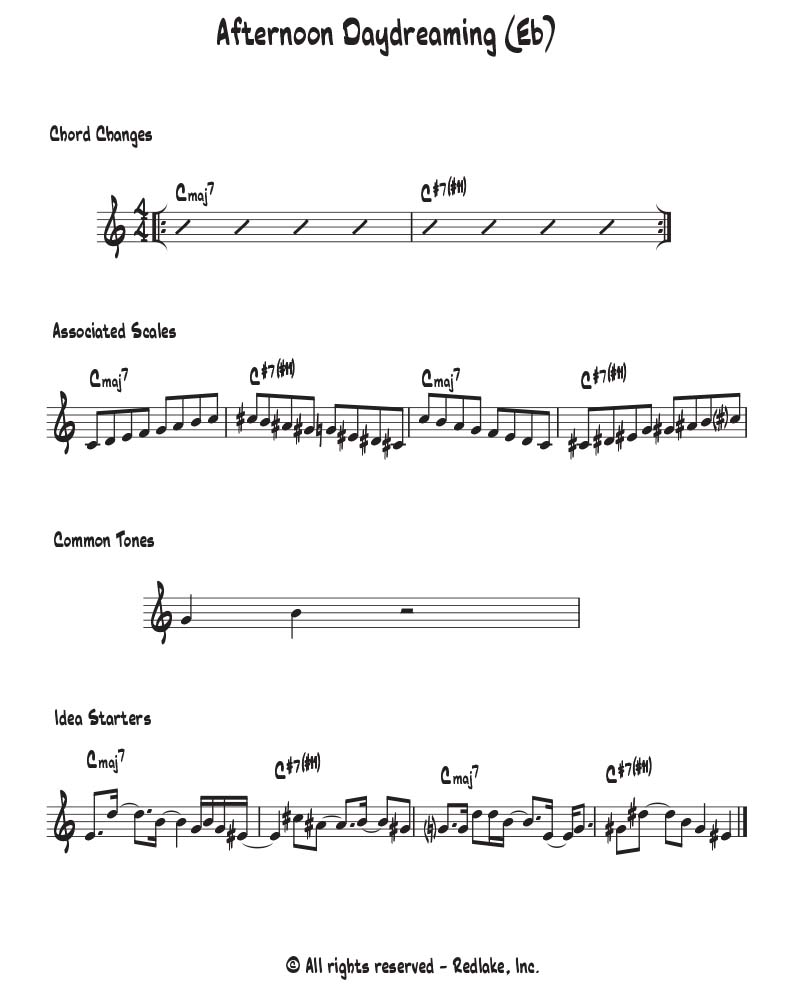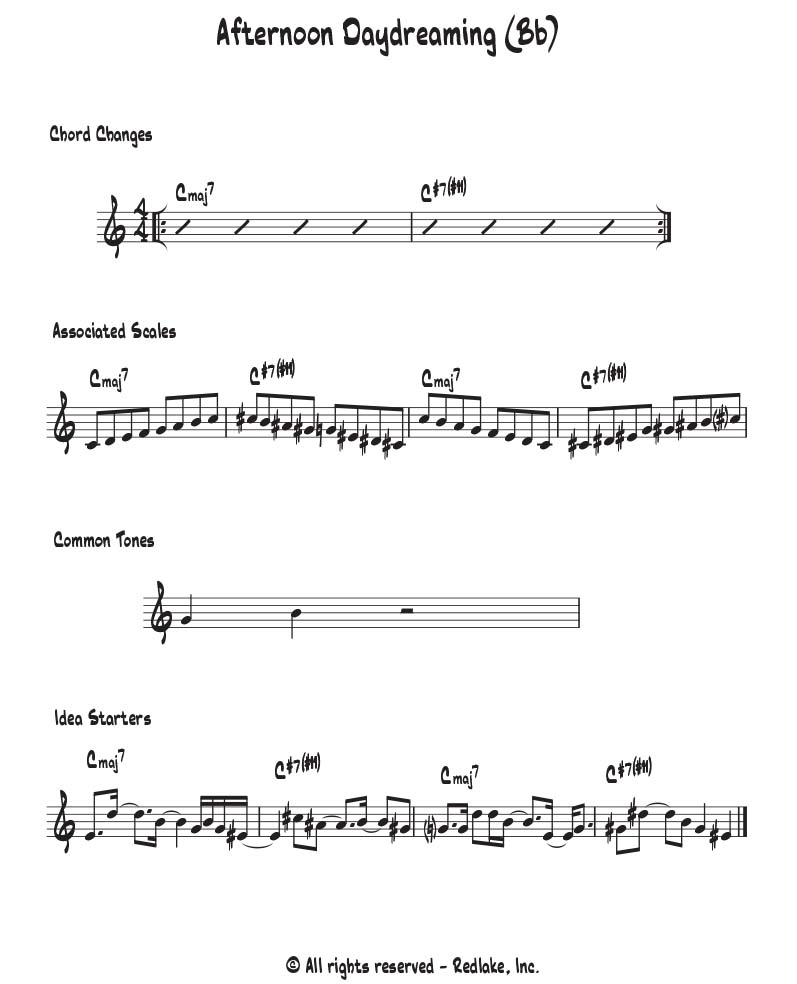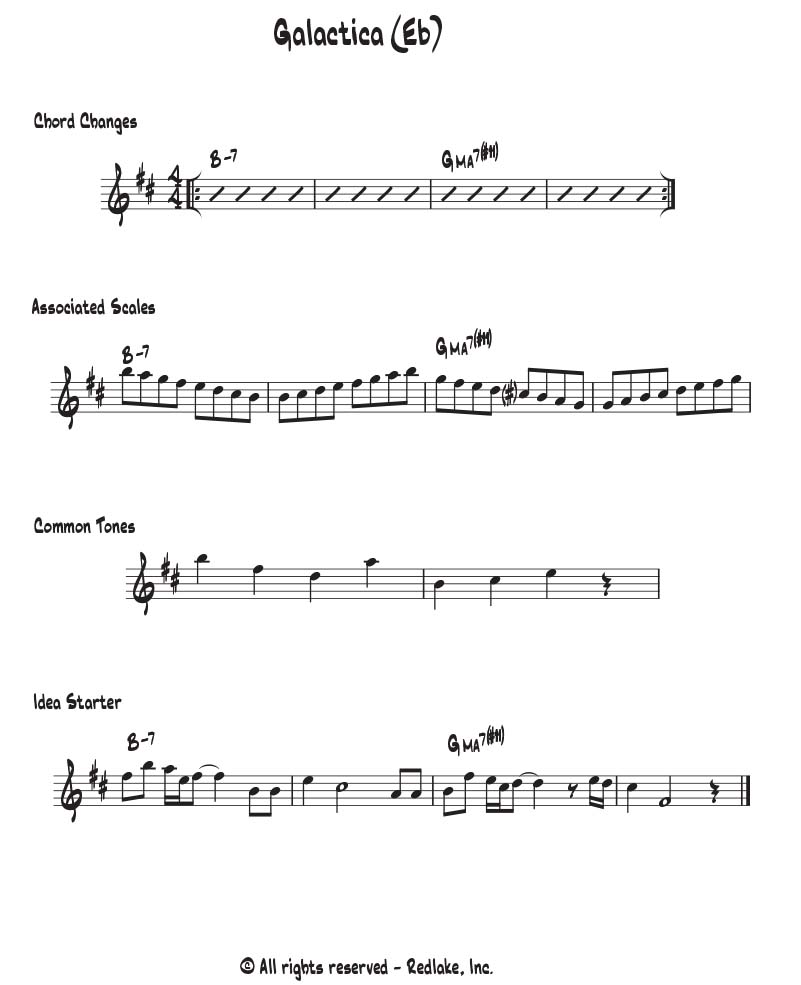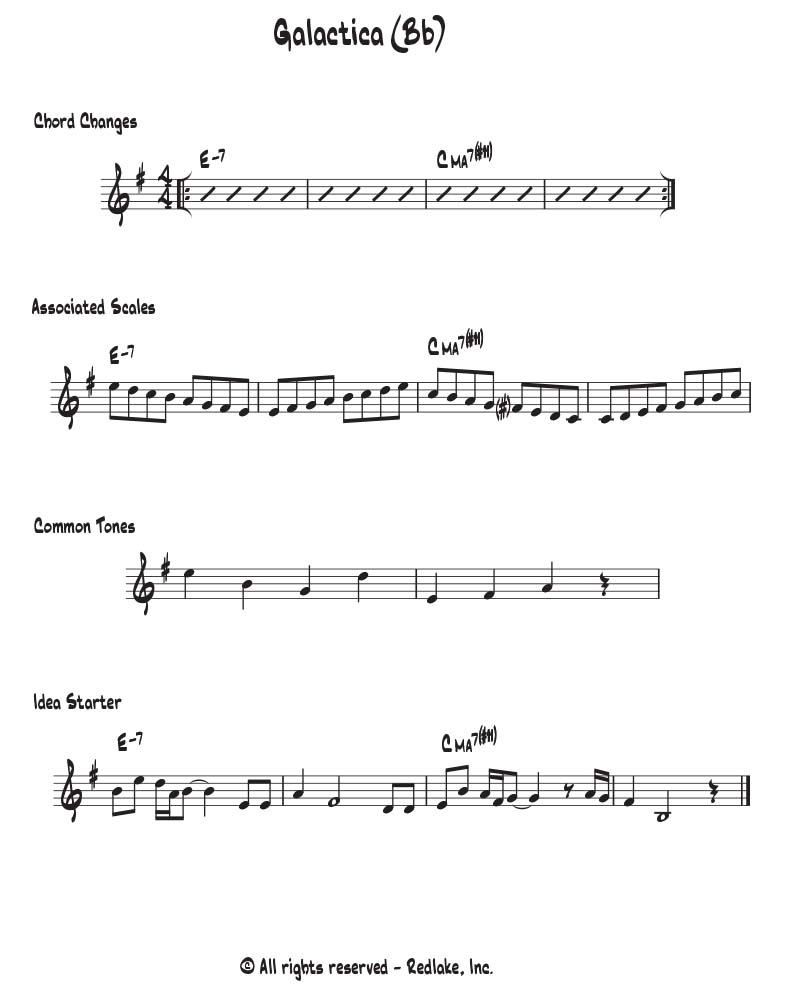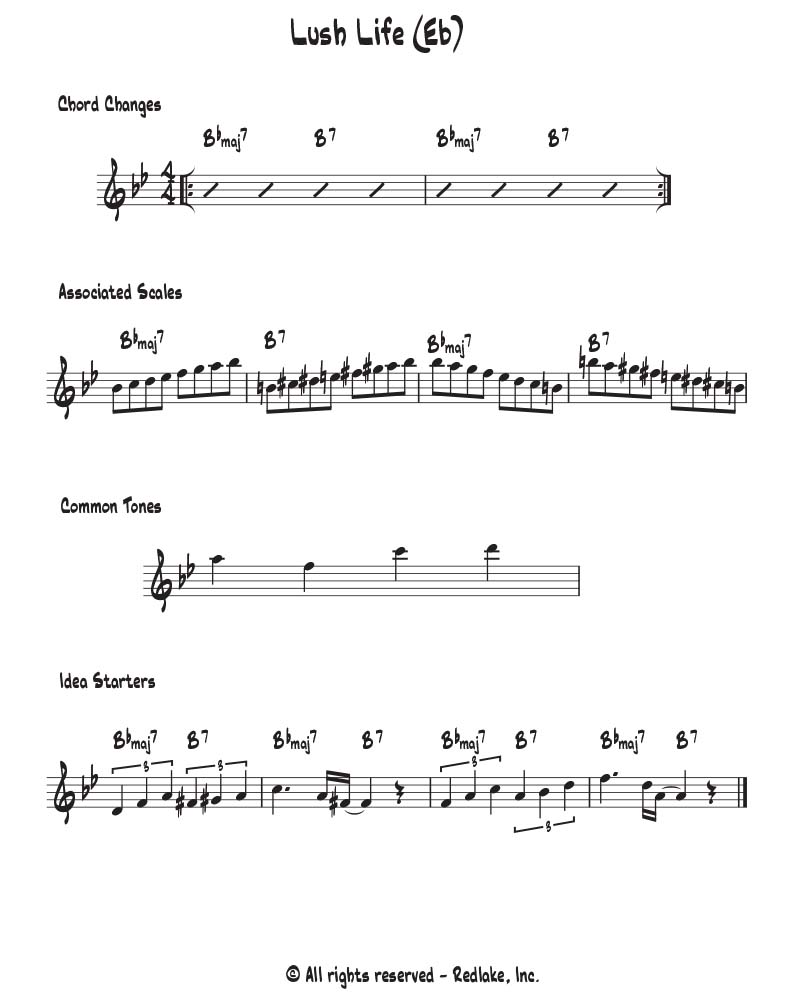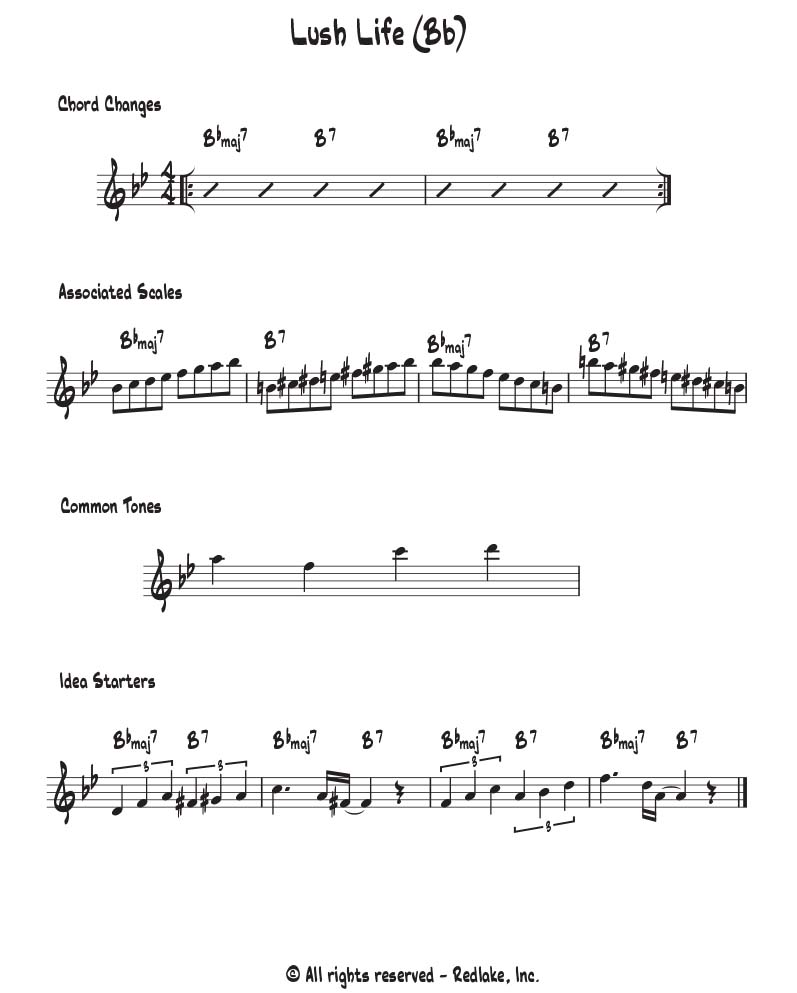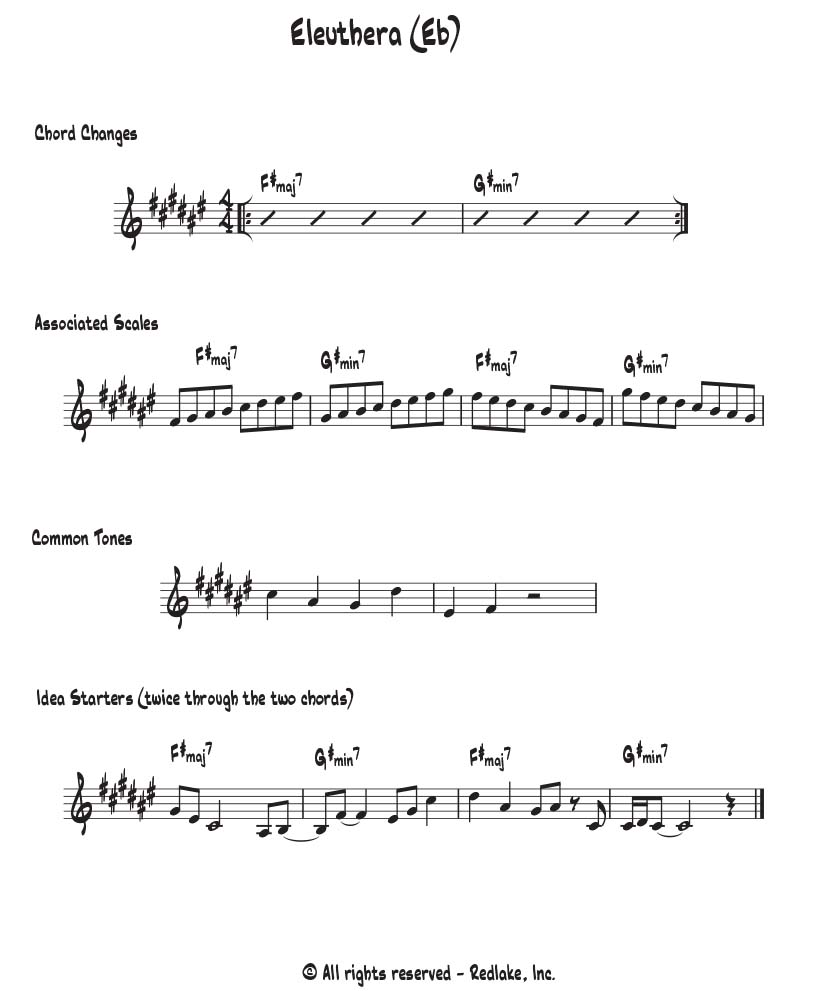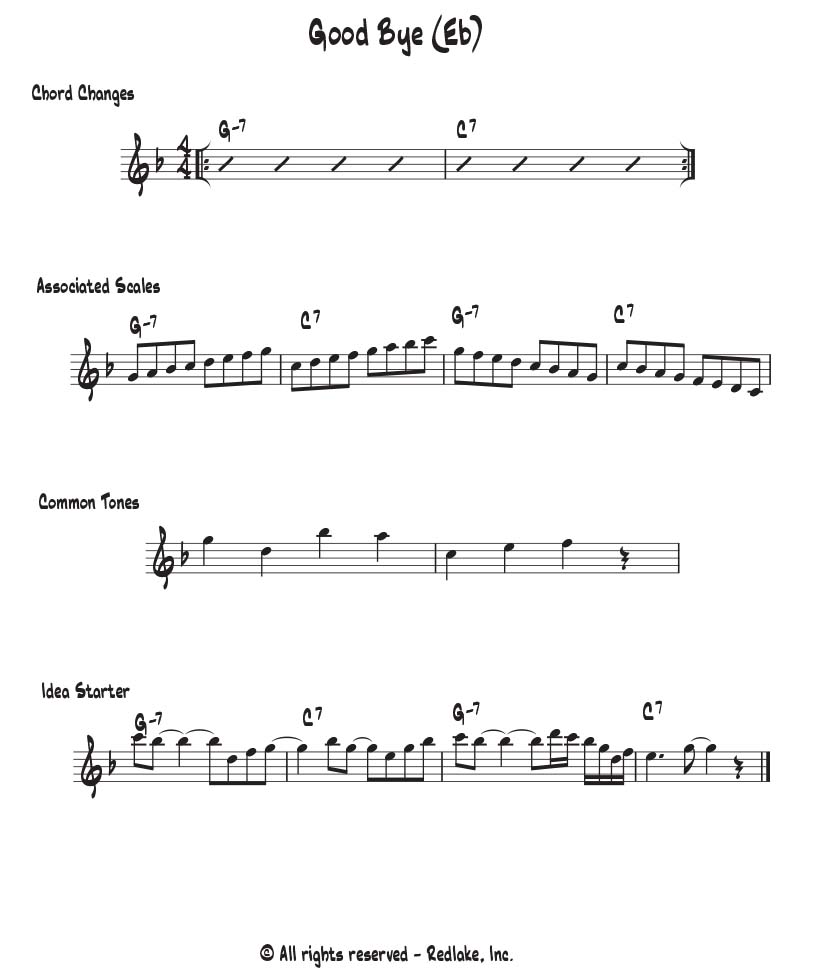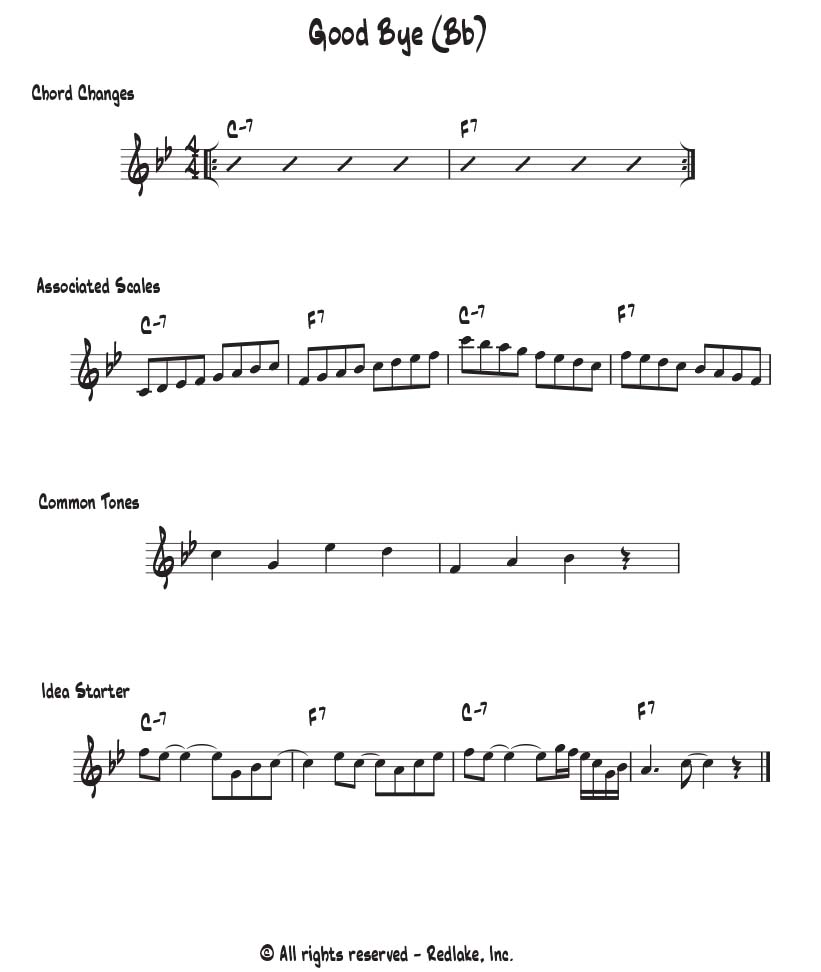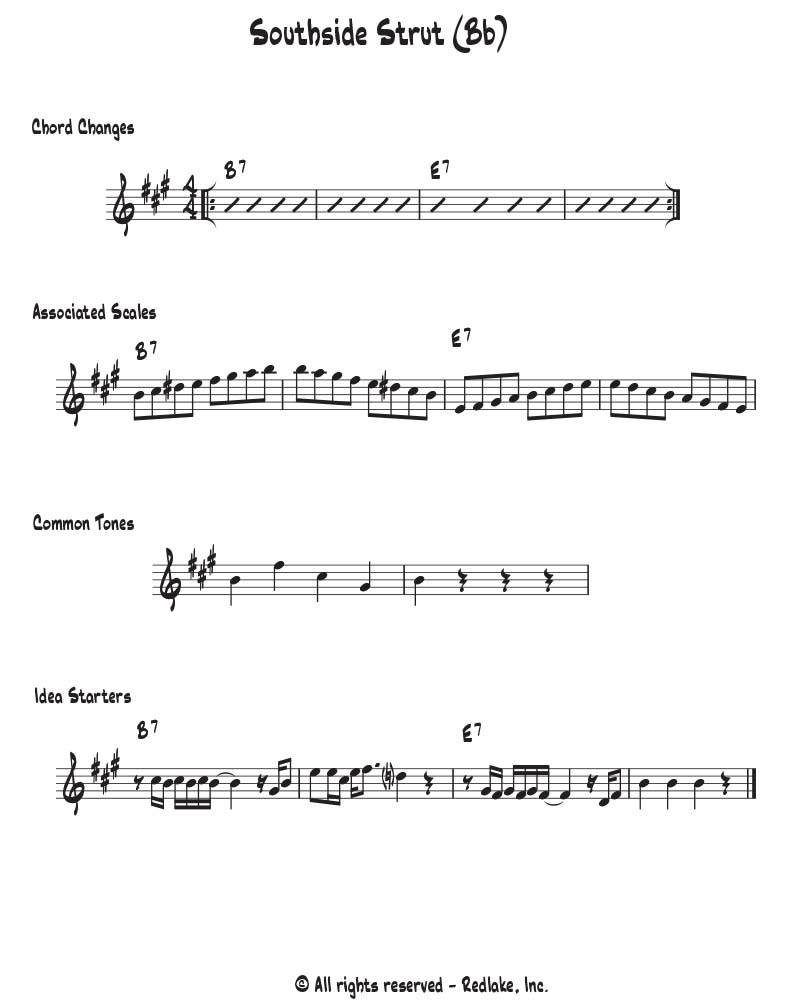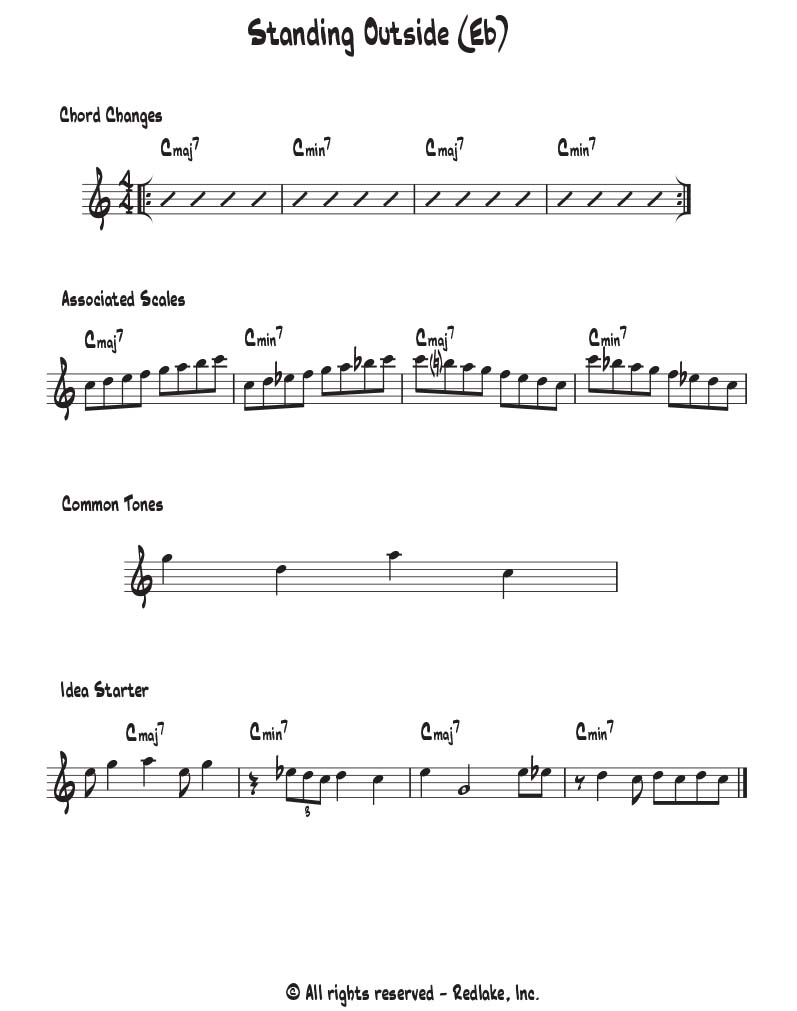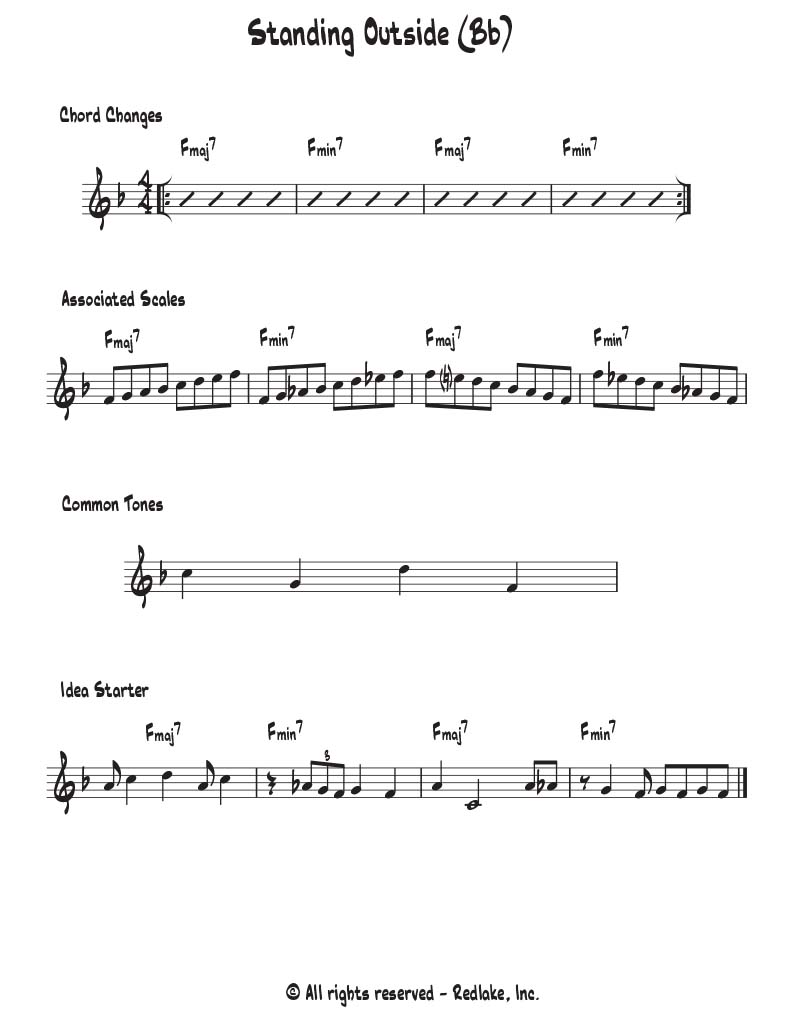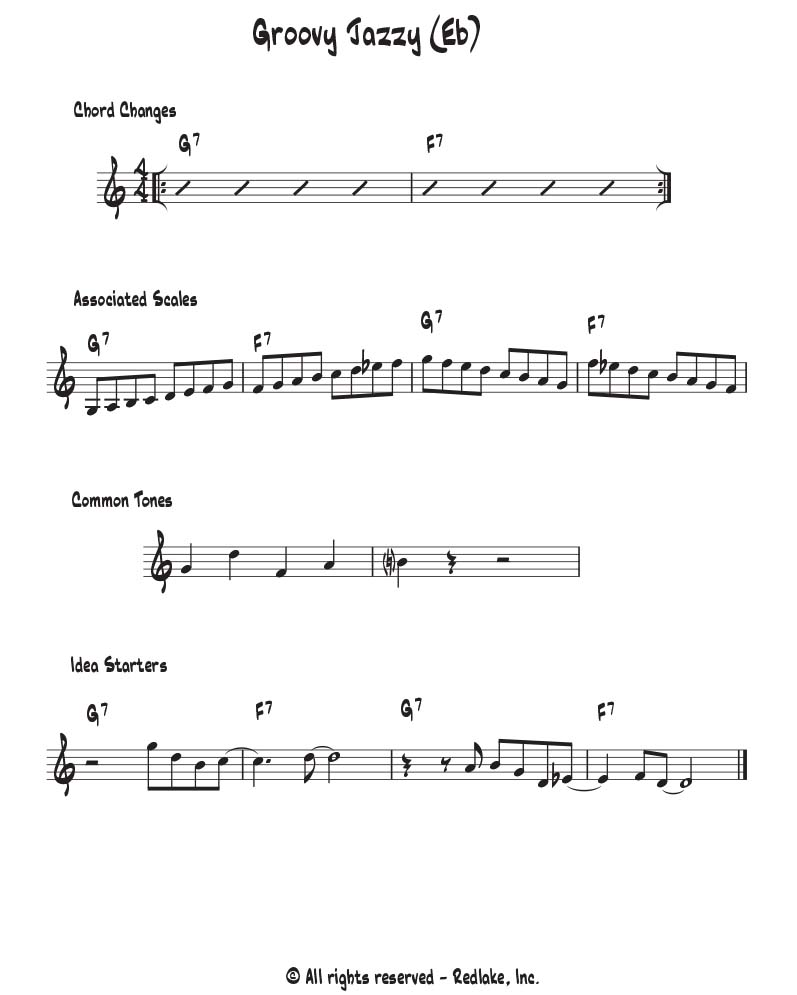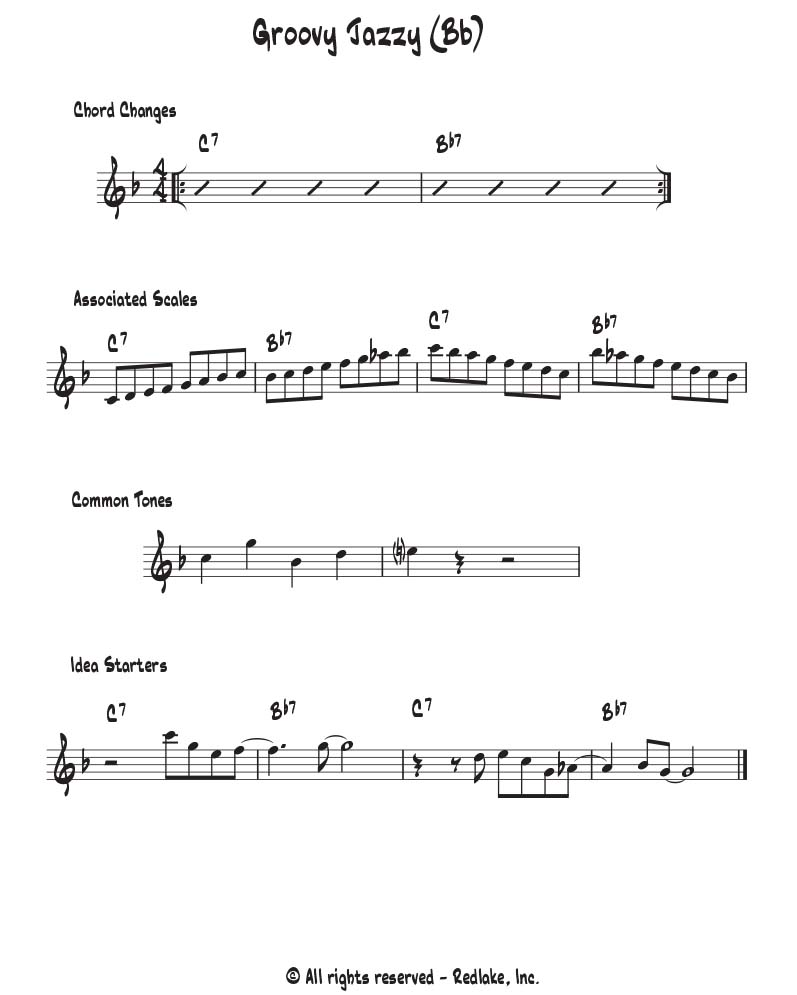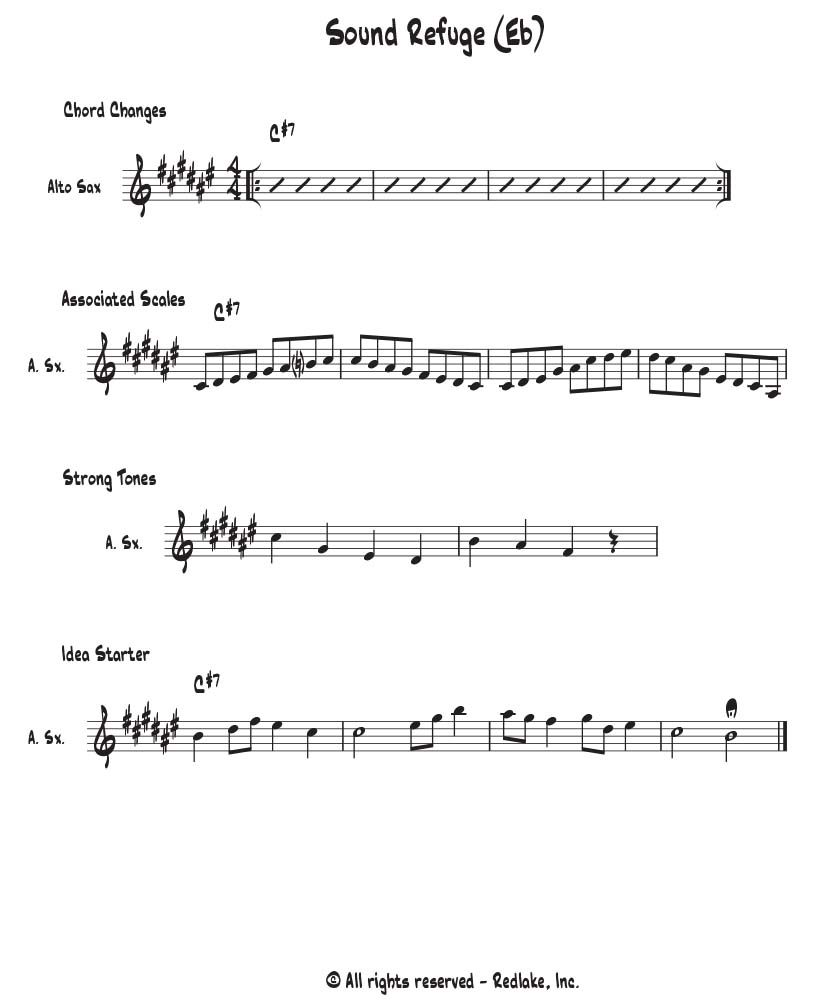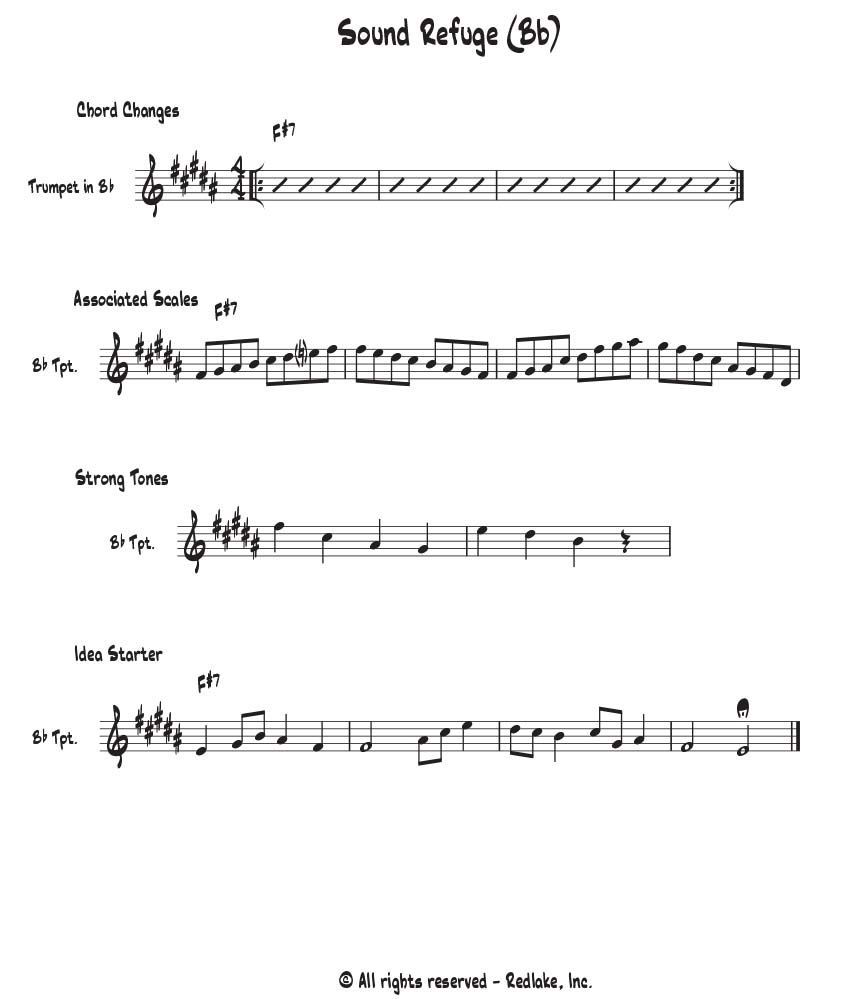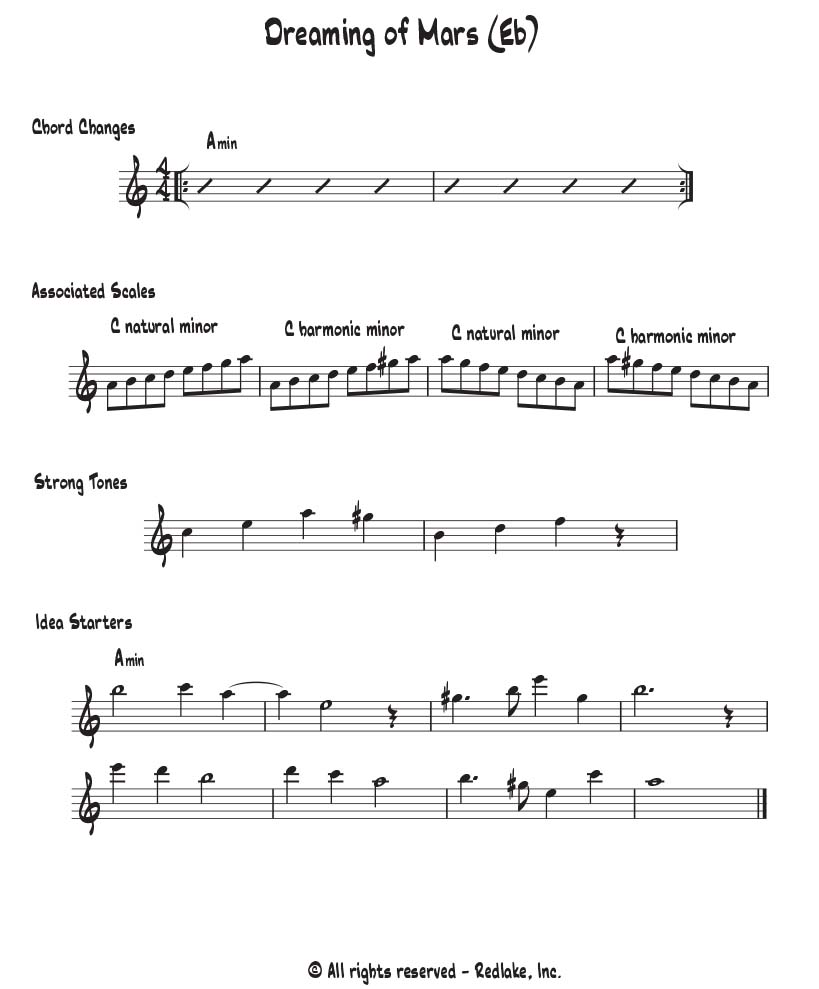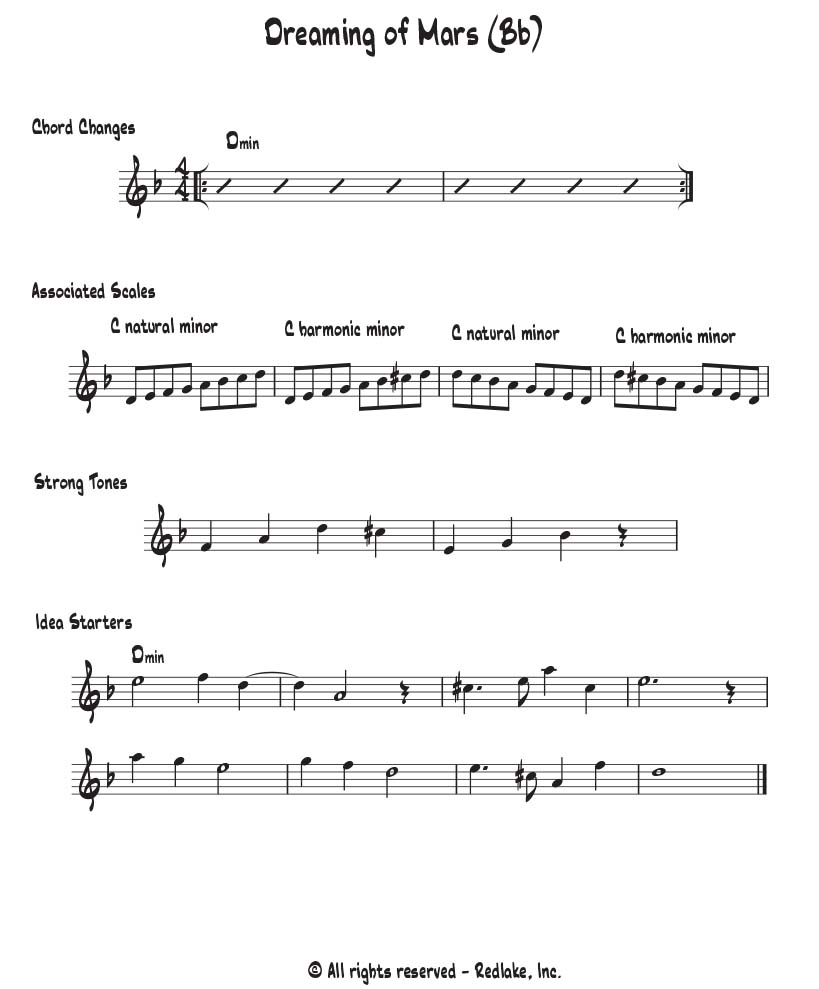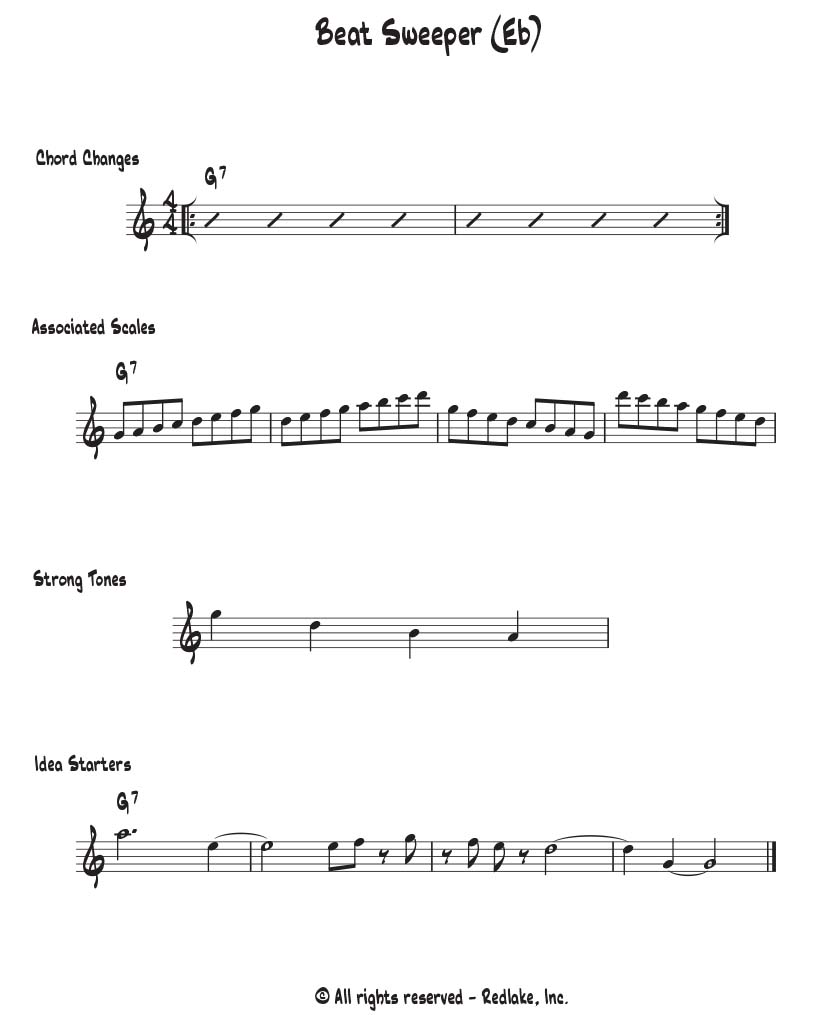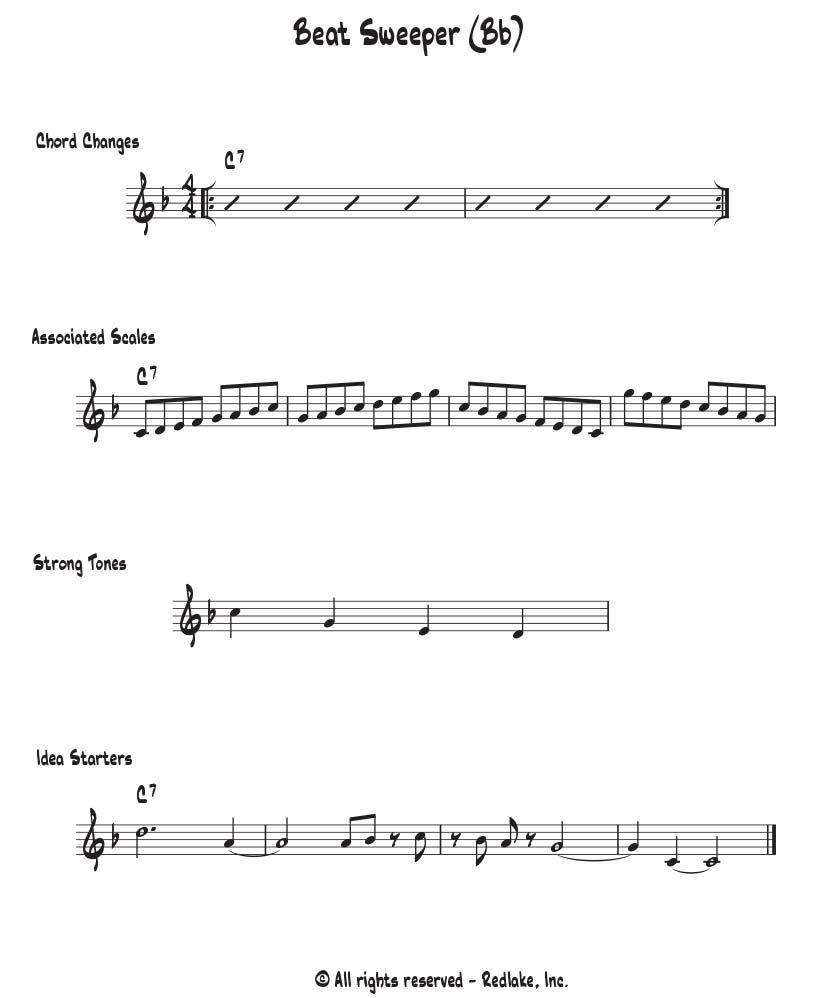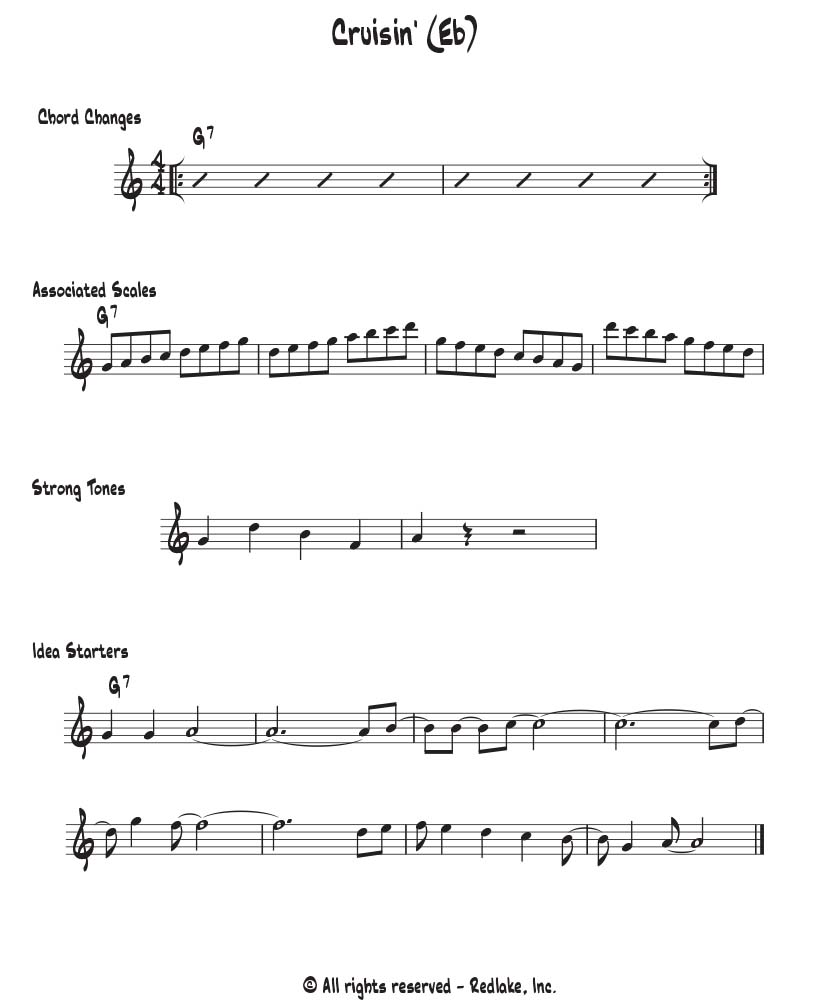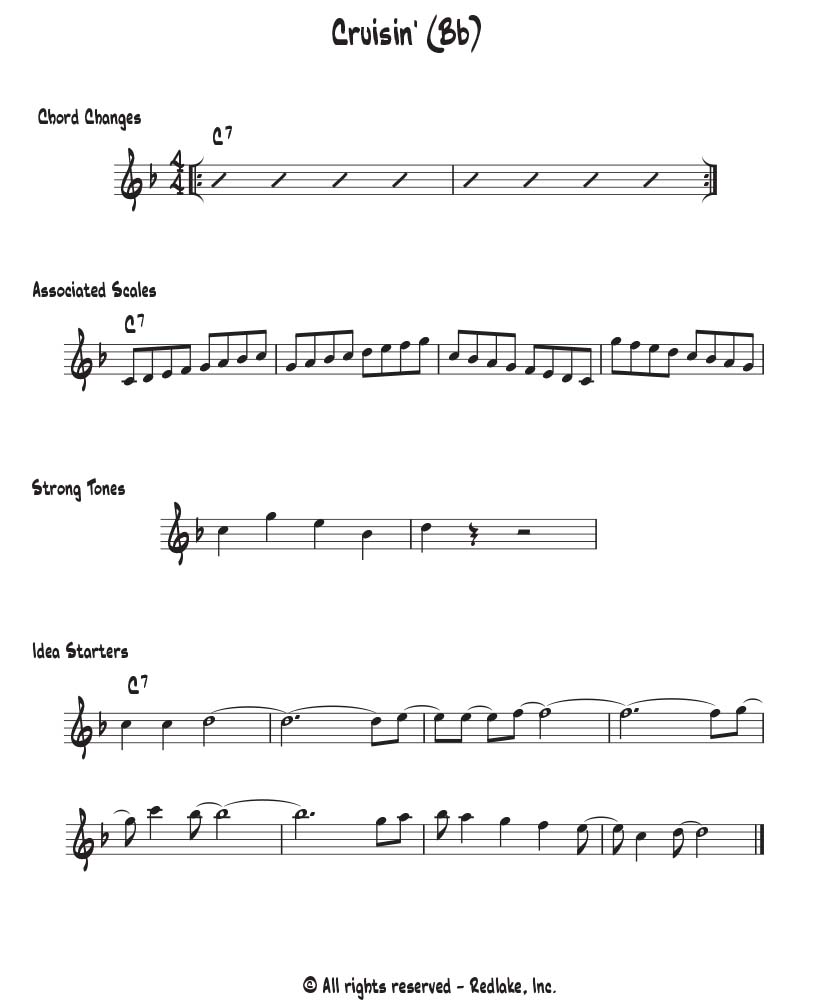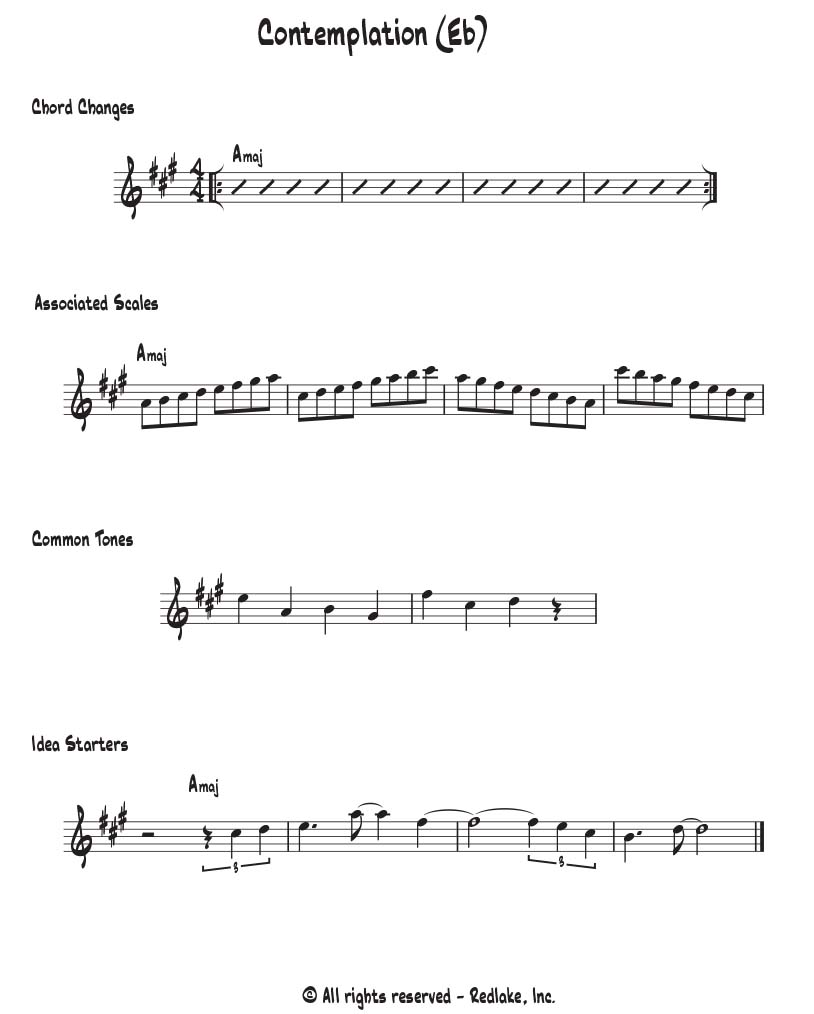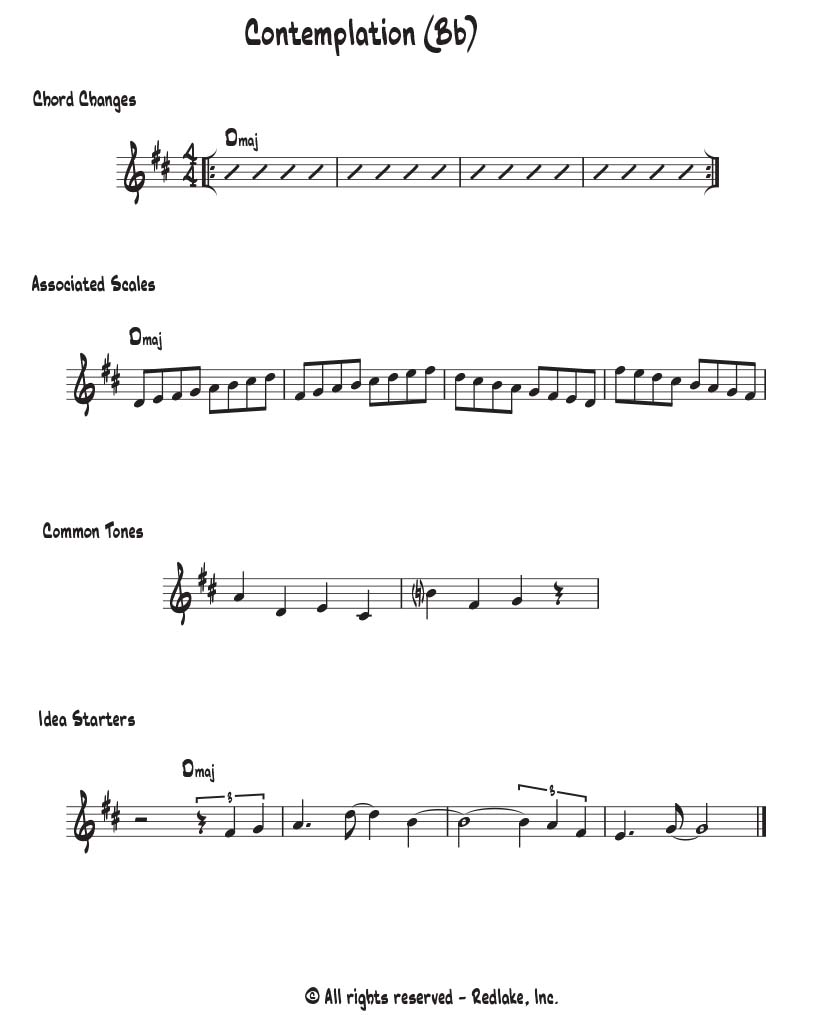Using Your Ears Instead of Eyes
Most of us were first taught music using our eyes. Notes, bar lines, chords, harmonic functions, etc. After all, much more of our brain is dedicated to sight than to hearing, so comprehending music visually kind of makes sense. But music is an aural art form and if we don’t transition to primarily focusing on what we hear, we may never arrive at the ability to create a personal emotional expression through music.
I find this especially true in jazz. For too many, it has become somewhat of an automatic habit to read chords off of a lead sheet as a prerequisite for improvising over a tune. Yes, if you are to play over an unfamiliar tune, you need the changes, but shouldn’t the objective be to NOT use the written page as soon as possible? And certainly not for the core group of standards?
This is lesson is my version of a four-step program for getting your eyes off the page, and I use the standard tune Night and Day as the vehicle for demonstrating to you how much better you’ll play over anything once you exclusively use your ears rather than your eyes.
Video transcription
I recently wrote a post on my blog and I called it, “So you really think staring at chords helps you improvise better?” I know it’s a little bit of a cheeky title, but I’m trying to make a point. I receive lots of comments and emails from people that say something like when improvising, I hear where I want to be, but I don’t quite get there. And my eye is tracking the lead sheet for the right chords and the right scales. That’s an actual comment from someone recognizing that reading a lead sheet is a source of friction for his improvisation. Its problem. Now I say good for him because way too many people don’t even see the problem, you know, staring at chord changes and translating the chords and symbols into scales is just how we improvise.
01:03 – 01:53
So this person is not alone depending on his eyes to direct him and what to play and to be fair. A big portion of our brain is dedicated to vision. That’s why we say I’m a visual learner, right? Only a tiny bit is, is dedicated to hearing. So it’s understandable why we start music students off with the written page. Although, you know, I think we could do a lot better by introducing them to, you know, music through their ear earlier. And that’s what I want to do in this lesson. I want to give you an aha moment about your improvisation. So I thought of an interesting experiment or exercise and I’m gonna use the standard tune by Cole Porter night and day. If you don’t know the tune, this is your opportunity to learn it. So it’s a standard. You, you gotta know
01:54 – 02:33
and let’s imagine that you had to improvise over night and day in the key of G flat, not the standard key of C. And most likely you’re going to ask for the lead sheet or the cords. And if you, if you are, you’ll be handed this: (thinking of the chords). Oh my God. And you think you’ll be able to express yourself through your playing by contemplating all of that throughout the tune in real time.
02:33 – 03:31
I don’t think so. Now you might be thinking, well, I just need to memorize all those chords. But if you do, are you playing satisfying emotional jazz as you run through all those memorized chords through your mind in real time? No. How about using your ear instead. Now, your immediate reaction is probably I can’t play in G flat and I certainly don’t know what key the bridge is in. I need the lead sheet. Try this instead. Below this video on the page is an audio player with the rhythm track to night and day in G flat at a moderate tempo. And here’s what we’re gonna do with step one. Listen to the track and sing, not play, sing the melody of night and day. Now by now you know my thoughts on singing, don’t worry about tone technique. Chops.
03:31 – 04:00
Just get out the pitch because your voice doesn’t know degrees of difficulty in keys and outside of, you know, vocal range, G flat is just as easy as C when you sing and while you sing, listen to your voice and to the track and sing the melody a few times through this is the first step toward learning the tune. If you don’t know it next over the track over that same track, play the melody with your instrument.
04:01 – 04:44
Now you may stumble and hit a few wrong notes. But that’s fine. Just resist the temptation to think to yourself.” Let’s see, the bridge is the first chord is a major and that means that the first note should…” no, don’t do any of that. Don’t calculate. Just listen. And when you get stuck, finding a note, sing it, put the play head back and then play it again. There’s magic in singing. There is when you, when you’re trying to find a note on your instrument, if you sing it, I think you’ll find that in that note much quicker on your instrument. Just, it playing becomes so much easier because you’ve got it in your head.
04:45 – 05:12
Maybe you can play the, a section on your instrument, but you need to sing the bridge a few times and that’s fine. You’re training your ear with this exercise, do this until you can play the melody by ear without thinking or stumbling just as if you were singing it and it may take a while, don’t cheat. Now by, you know, looking at a lead sheet, although I don’t think you’re gonna find a lead sheet that has the melody or the tune in G flat.
05:12 – 05:47
Maybe start all of this by listening to a recording of Night and Day if you don’t know the tune all that well, listen to Stan Getz and Bill Evans play on the Stan Getz’s Bill Evans album or listen to Frank Sinatra sing it and it’s in another key, but it’s on his, a Swinging Affair album. There are lots of recorded versions of Night and Day out there. They’re easy to find. And by the way, learning lyrics is always a good thing to do when you’re learning a tune. It gives you the, the sense of what, you know, in this case, Cole Porter was trying to say in the tune.
05:48 – 06:24
Once you can easily play the melody without calculating or fumbling or singing, to help you find notes you can’t hear next, sing, not play, sing some improvisation over the rhythm track. Now, nothing complicated. Maybe just embellish the melody get used to singing and hearing your musical ideas. It’s an incredibly powerful tool for hearing and expressing the music inside you without the friction of your instrument getting in the way last, improvise over the track with your instrument.
06:25 – 07:15
And again, nothing fancy, embellish the melody just to start play around with the melody. Your focus is not on finding those right notes or playing complicated lines, but instead playing what you hear inside because it’s in there, you’ve probably been so focused on the damn letters and the Roman numerals and the symbols that you haven’t paid enough attention to musical. You and I’m betting you haven’t heard its real potential. And that’s what I’m hoping this will give you a hint at. Now, this lesson isn’t necessarily about teaching you how to learn a tune. Although you know, these are good things to do as you learn a tune. But the point of this is to give you the positive experience proving that you can play over a difficult key or odd changes if you listen and apply your hearing and how much easier it is and more musical than translating chords into scales from reading a lead sheet.
07:16 – 08:07
Improvising jazz is, it’s kind of like if you do that by looking at the lead sheet, it’s kind of like reading a map on the freeway between you and the, and the, and the windshield, right. You know, at least in jazz you won’t be killed, but it’s not gonna end well. Now this isn’t magic, you know, so you won’t immediately become as fluent on the tune as Stan Getz or Herbie Hancock. It’s giving you a taste of your actual musical abilities. So go ahead and practice the scales and the chords over and over and over and over, but not for memorized material for blowing. Put that aside when it comes time to improvise.
08:08 – 08:49
You still need to put in the work on your instrument. But when it comes time to blow over the changes, forget about all of that. I want this lesson to prove to you that you can stand up with your eyes closed and play improvised music regardless of the key. And by the way, Stan Getz didn’t know uh uh a loan scale from a diminished scale. At least not in theory, everything he played was purely by ear. And I think that is what makes for playing jazz for, for expressing your emotions and it’s not how fast or how complicated you can run scales in G flat major.
08:50 – 09:30
So do this exercise and again, step one, sing the melody over the rhythm track Step two, play the melody over the rhythm track. Step three, sing a simple improvisation over the track, maybe just embellish the melody and step four improvise over the track with your instrument and hear the musical difference between staring at a lead sheet and playing the translation of the chords and what you hear coming from the music around you and your instrument. I think you’re gonna find the difference is between night and day.
